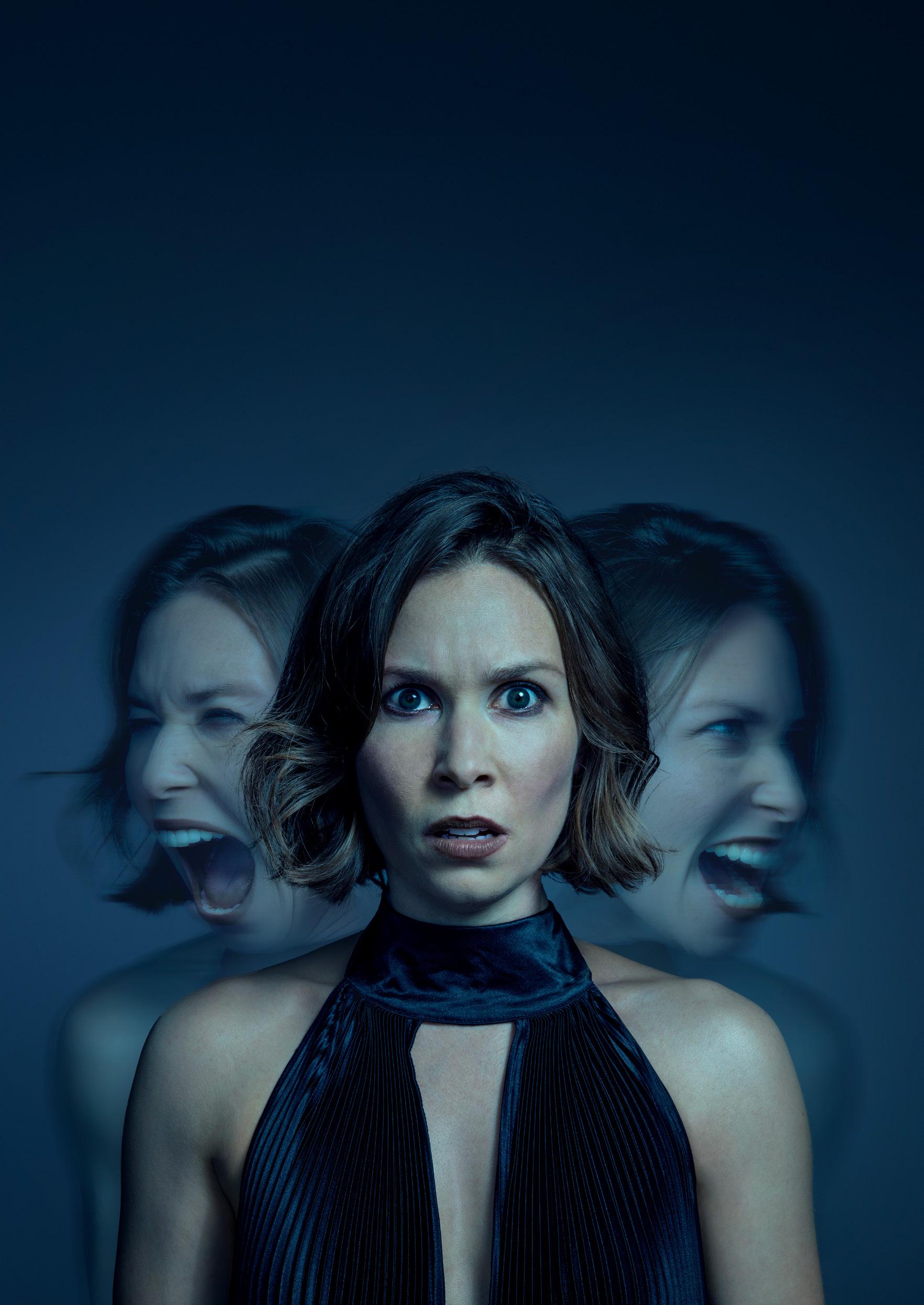

EDUCATION PACK
WRITTEN BY ANNA RICHARDSON & EMILY HURLEY
He pou atua, he pou whenua, he pou tangata.
Ko Waitematā te moana
Ko Waikōkota te whenua.
Ko Te Pou Whakamaharatanga mō Māui Tikitiki a Tāranga te tohu o te kaha, o te kōrero, o te whakapapa o tēnei wāhi, o tēnei whare.
Nau mai e te tī, e te tā ki te whare kōrero, ki te whare whakaari o ASB ki te tahatika o te moana.
Mauri tau, mauri ora!
Pouwhakamaumāharatanga mō Māui-Tikitiki-a-Tāranga
The Memorial Post of Māui the Topknot of Tāranga
Robert Jahnke ONZM (Ngāi Taharoa, Te Whānau a Iritekura, Te Whānau a Rākairo o Ngāti Porou) 2016
Laminated tōtara and Corten steel
Proudly commissioned by Auckland Theatre Company for ASB Waterfront Theatre


The symbols of support, of strength and of guardianship stand fast and proud.
The waters of Waitematā ebb and flow against the shores here at Waikōkota, the land upon which we stand.
The pou of remembrance to Māui Tikitiki a Tāranga stands tall as a beacon of courage, of stories passed down and of the history that connects us all to this place and to this space.
We welcome you all from near and far to this house of stories, to the ASB Waterfront Theatre.
Mauri tau, mauri ora!

21 AUG – 7 SEP 2025
CAST
Emily Adams — Marta
Timmie Cameron — Claire Clairmont
Tom Clarke — Lord George Byron
Arlo Green — John Polidori
Dominic Ona-Ariki — Percy Shelley
Olivia Tennet — Mary Godwin
MUSIC RECORDING
Abraham Kunin —
Mixing, Engineering
Peau Halapua — Violin
Kali Halapua — Viola, Violin
Callum Hall — Cello
Tim Shacklock — Double Bass
Darrell Daglish — Swiss Alphorn
Paul Downie — Harpsichord
provider and tuner
Eric Renick — Percussion
CREATIVE
Playwright — Jess Sayer
Direction — Oliver Driver
Set Design — John Verryt
Lighting Design — Jo Kilgour
Costume Design — Sarah Voon
Composer & Sound Design — Leon Radojkovic
Choreographer & Movement Director — Ross McCormack
The Engine Room Assistant Director — Katrina George
Dramaturg — Shane Bosher
Intimacy Coordinator — Lara Fischel-Chisholm
Vocal Coach — Cameron Rhodes
Teaching Artist — Emily Hurley
Education Pack Writer — Anna Richardson
MARY: The Birth of Frankenstein, written by Jess Sayer and developed in collaboration with Oliver Driver, is the fifth production in Auckland Theatre Company’s 2025 season.
This production began previews on Thursday 21 August and premiered on Saturday 23 August at the ASB Waterfront Theatre, Auckland. The production is two hours long, including an interval. It contains offensive language, depictions of drug use, sexual content, violence, flashing lights, haze and scent effects.
Please ensure all mobile phones and noise-emitting devices are switched off.


About This Pack
This education pack is designed to support your exploration of Auckland Theatre Company’s production of MARY: The Birth of Frankenstein by Jess Sayer. Whether you’re an kaiako preparing lessons, an ākonga studying the play, this resource offers insights into both the original text and this specific production.
This education pack is divided into three sections:
About the Play
Making the Play
Activities
After a welcome from Auckland Theatre Company, this section includes key information about the cast and creatives, essays providing essential context and background information, and a synopsis of the production.
This section takes you behind the scenes with artefacts from the rehearsal room, key design concept insights, and notes to and from the cast, giving you a unique window into the creative process.
NCEA-linked activities that you can try in your classroom or at home to help you unpack and explore this production of MARY: The Birth of Frankenstein by Jess Sayer.
Each section builds upon the previous one, but you can also use individual components as standalone resources. The activities are designed to complement the contextual information and production insights, making this pack suitable for both independent study and classroom use.
About The Play
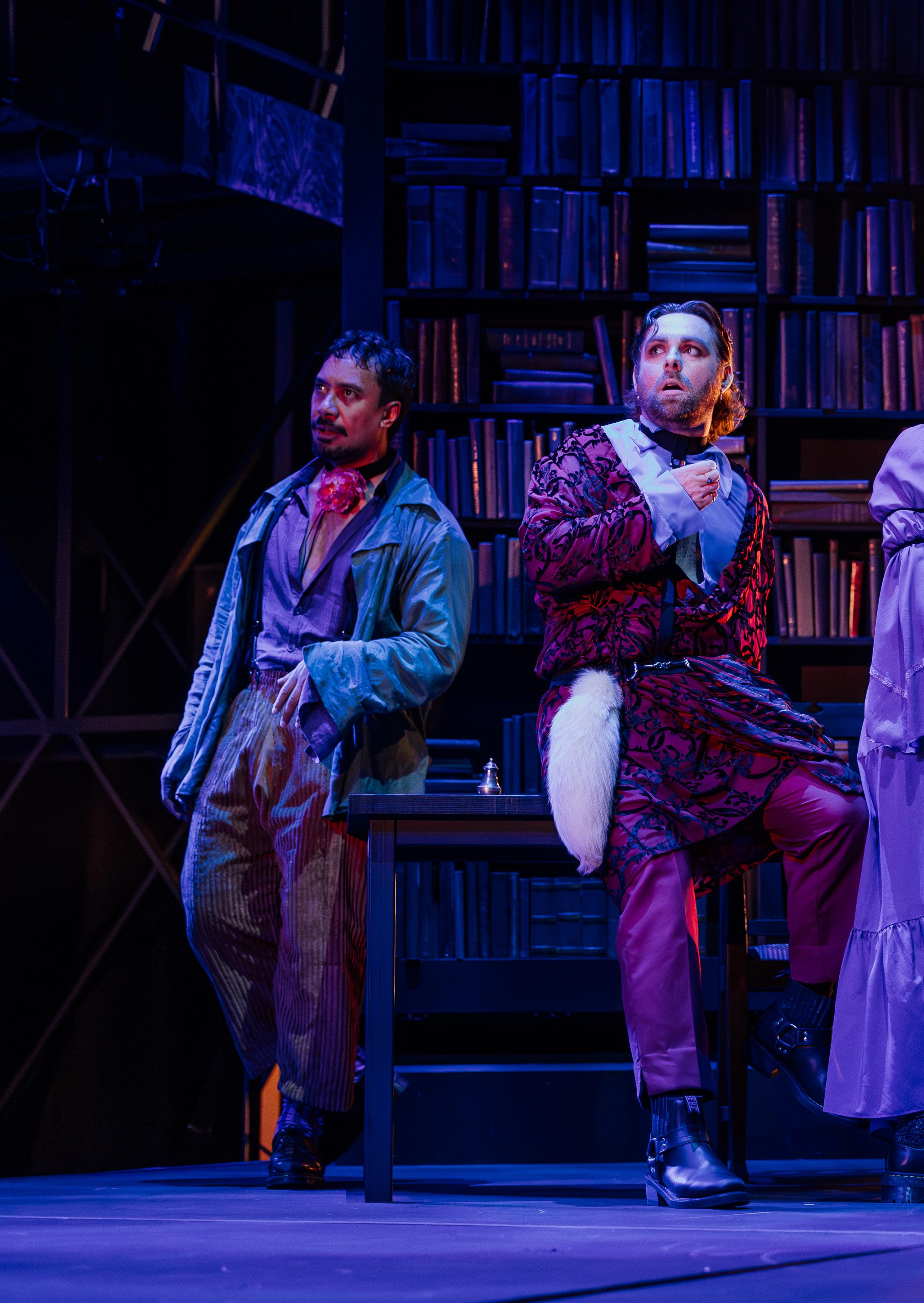
Key information about the cast and creatives, essays providing essential context and background information, and a synopsis of the production.

Haere Mai
It would be impossible to overstate the cultural consequences of the European summer of 1816 at the Villa Diodati. Mary Shelley and the other literary figures present created stories that have been adapted and retold for more than two centuries since. Vampires. Monsters. The undead. Horror, gothic literature and science fiction, as we know them, all passed through that moment.
Playwright Jess Sayer has both recreated this literary linchpin and envisioned an alternative version of what happened that is deliciously deadly. Jess’s writing is clever, witty and original. A world premiere is always cause for special celebration and so it is with this new play.
Returning to Auckland Theatre Company for the first time since the success of Amadeus in 2017, director Oliver Driver has created a startling new show, filled with theatrical flourish and unbridled artistic daring. Oliver is an influential figure in the development of our Company and theatre in Auckland, so it is thrilling to have his brilliant artistic force back.
Oliver’s cast has dared to go big. They are fearless and I adore them for it. The members of the creative team, who surround the cast, are equal to the moment as they have dreamed on a monumental scale.
Strap in. This one’s a wild ride.
Jonathan Bielski Artistic Director & CEO
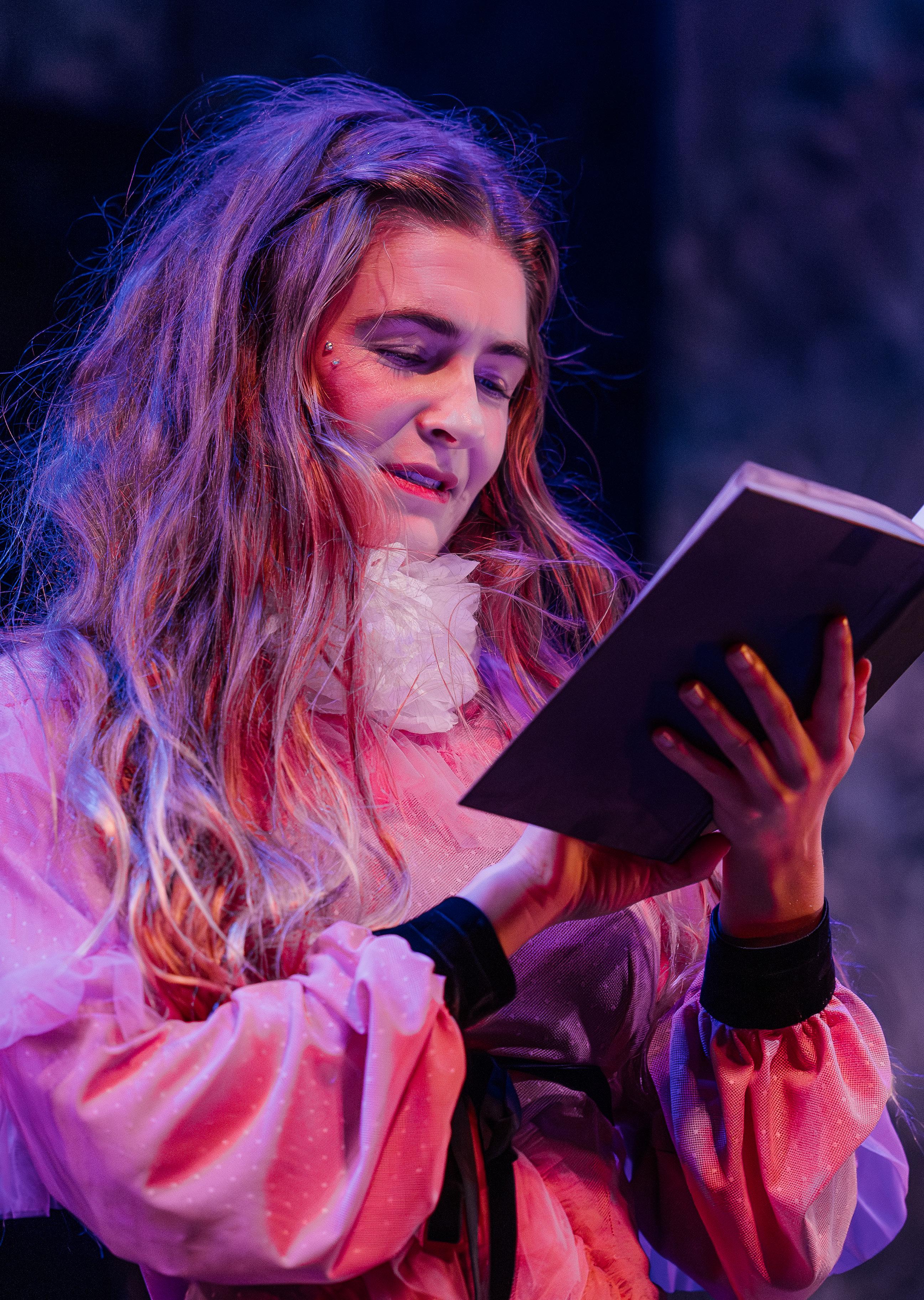
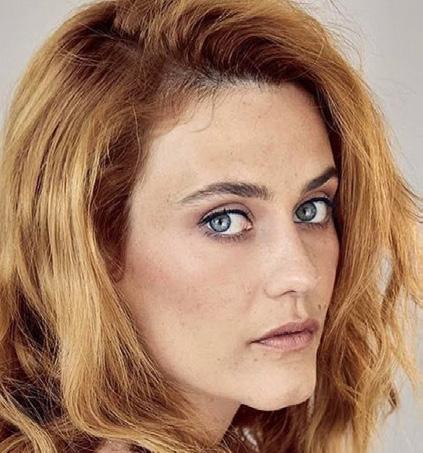
Playwright
Jess Sayer
Jess Sayer is a multi-award-winning screenwriter, playwright and actor, based in Tāmaki Makaurau.
As a writer, Jess has amassed an impressive collection of accolades. She is a three-time winner of Playmarket’s Playwrights b4 25 competition, won the Adam NZ Play Award in 2020 and, in 2015, received the prestigious Bruce Mason Playwriting Award. In recognition of her early impact on the stage, she was named Best Newcomer at the Auckland Theatre Awards in 2014. Her theatrical works — including Elevator, Wings, Crunchy Silk, and Fix — have enjoyed sell-out seasons at Auckland’s Basement Theatre.
Jess has written and storylined for a number of major productions, including The Ridge (BBC and Great Southern), Dirty Laundry, Filthy Rich (Filthy Productions), Shortland
Street, Go Girls, Step Dave, The Bad Seed 2 and 800 Words (South Pacific Pictures), as well as for FluroBlack, Hi Mama Productions, Warner Brothers and Cinco Cine. She was Head Writer of the hit web series Auckward Love, which became one of TVNZ OnDemand’s top-performing shows in 2016.
As a screen actor, Jess has played lead role Kara Hurring in the feature film Runaway Millionaires. She is known to many as Maeve Mullens, a core cast member on Shortland Street, since 2019. Other recent credits include the acclaimed comedy Mean Mums, the cult film DEAD and a number of stage productions, including Mr Red Light, Wings, Always My Sister and Famous Flora.
MARY: The Birth of Frankenstein is Jess’ Auckland Theatre Company debut.
Note from the Playwright
I adore these characters and have had the time of my life bringing out the worst in them.
MARY: The Birth of Frankenstein is the biggest thing I’ve ever written and is taking the stage tonight only because I had a lot of help along the way. If you see these guys, give them a hug:
My love Amanda Tito, Stuart Hoar, Andi Crown, Stephen Lovatt, Shane Bosher, Pip Hall, Sara Wiseman, Claire Chitham, Leon Wadham, Serena Cotton, Clementine Mills, Morgana O’Reilly, Sam Snedden, Jared Turner, Edwin Wright, Colin Moy, Allison Horsley, Auckland Theatre Company, Unitec School of Creative Industries, Playmarket and the incomparable Tim Finn, who reintroduced me to Mary Shelley.
MARY would not exist without my partner in depravity, the brilliant Oliver Driver. Thanks for pushing
me in all the right ways and never letting me give up on this monster of a play.
And thank you, for coming to support a new work. I hope you get something out of this wild play. The cast and team are electric and I am in awe of them.
A note:
This play is not historically accurate, nor was it ever intended to be. It’s a weird love letter to Mary Shelley, who, in 1816 at 18 years old, wrote a wild story that we’re all still obsessed with today.
It’s a love letter to anyone with wild, dark, twisty stories inside of them –I hope you write them down.
Enjoy. It’s a perfect night for mystery and horror. The air itself is filled with monsters.
Jx
Playwright Jess Sayer on Frankenstein’s Mary Shelley and the creation of a monster
By Jess Sayer
Republished, with permission, from The New Zealand Herald, dated 9 August 2025
In a blood-soaked tribute to the 19th-century teen sensation who brought Frankenstein’s monster into being, playwright Jess Sayer lets loose a few monsters of her own.
We should all be obsessed with Mary Shelley. I am I’ve spent the past seven years writing a play about her. Her life is both fascinating and tragic, and I still feel as though I’ve barely scratched the surface.
At 18, Mary began to write her first novel: Frankenstein; or, the Modern Prometheus, a sci-fi/Gothic novel where man appropriates God. First published anonymously in 1818, Frankenstein would have a lasting impact, entering into the English literary canon and remaining both as horrifying and poignant today as it was then.
When I was 18, my idea of rebellion was buying packets of Squiggles from the dairy by my uni accommodation because I’d just moved out of home and no one could tell me what to do anymore.
Mary started Frankenstein in 1816, a time when the world was barely beyond the era of executing women – sorry, “witches“ – and women were considered incapable of directing their own lives.
1816 was dubbed “The Year Without a Summer“ or “Eighteen Hundred and Froze to Death“ after the 1815
eruption of Mt Tambora in Indonesia triggered global cooling, crop failures and widespread famine.
In Europe that year, “summer“ is dark and cold and awful. The Napoleonic wars have just devastated France and the young Mary Godwin – all heavy dresses and no rights – has just arrived in Geneva, Switzerland, with her lover (and future husband), Percy Bysshe Shelley.
They spend the next three months frequenting the Villa Diodati with Mary’s stepsister, Claire Clairmont, to visit the mad, bad and dangerous poet Lord George Byron and his personal physician, John Polidori.
Because the weather is so awful –terrific thunderstorms and perpetual rain – this group of genius literati is trapped inside with nothing to do. They spend the dark days and nights imbibing, talking about the principles of life and galvanism (the 19th century theory that electric currents could create life), reading poetry and scaring each other with ghost stories. Then Lord Byron sets a challenge: Let’s all write a horror story of our own.
Inspired, Mary comes up with the genesis of Frankenstein. Lord Byron and John Polidori focus on “vampyres“, leading to Polidori’s The Vampyre – published in 1819 and considered to be the progenitor of the modern romantic vampire genre.
By the time she attends this gathering, Mary has lived more than her years. Her mother (certified badass and proto-feminist Mary Wollstonecraft) died when Mary was around 11 days old, because we didn’t know about germs and hand washing yet. So, Mary basically grew up thinking she’d killed her own mother.
In a bold parenting move by dad William Godwin, philosopher), she learned to spell and write her name using her mother’s gravestone. Things only escalated from there – she fell in love with Shelley (a married poet) and got disowned because of it, ran away, lived abroad, was in dire financial straits and on the run from creditors, had a baby and lost a baby – all by the tender age of, let me repeat, 18.
Having seen and felt so much of life, it’s almost not surprising that when Lord Byron set his challenge, Mary Shelley responded with Frankenstein
It’s a story about birth and creation; about rejection, being unmothered and unloved. A story that warns us about prejudice; warns us that we must create responsibly and take responsibility for those creations.
Two hundred and nine years later, those warnings are as loud and urgent as ever.
Trying to condense all I’ve learned about Mary Shelley into a two-ish hour play has been a wild challenge, one I’ve baulked at more than once. How do you crush the life of a woman that brilliant into 104 pages?
So Mary: The Birth of Frankenstein is a snapshot; a fragment. It reimagines that dark and stormy Geneva summer over one night, fusing fiction with a backbone of fact. It’s about a young woman finding her voice in a time when women weren’t supposed to have one.
It’s about creation, and how bloody and violent it can be. It’s about rebellion and words and writers; about sexual politics and grief and motherhood.
It’s about a woman being furious and destructive, letting her rage and pain take physical form.
Monsters are not born, Mary said. They are created. In this play, I’ve created a few... I hope you come and see them let loose.


Director
Oliver Driver
I always find these bios a bit odd –what do you really want to know? Have I made lots of plays? Yes. Great – now that’s out of the way, can we talk about everyone else?
These days, I get to make theatre only once every few years so I make the most of it. Part of that is working with a creative team that excites, collaborates, challenges and laughs together – the kind of team you find only in theatre. Long-time partners Jo, John, Ross, Leon, Lara and Teresa are back in the room, joined this time by Jacob, Jack, Angus, Cat, Sarah and Nate. Every one of these play-makers has given their all: obsessed, argued, tried ideas and tossed them aside when better ones could be hunted down. Together, we’ve sculpted a show that only a few thousand of you will see before it disappears – ah, theatre.
Then there’s the cast. Simon Prast once told me that 90 per cent of any production is the casting. I’m not sure the percentage is quite right but I’ve lived by that motto ever since. Are they
right for the part? Will they lift the team? Are they brilliant, funny, wise – really, really, really, good? They are. Strap in.
And Jess Sayer. How to describe Jess –her work, her trust, her brilliance, her care for the words and for every person who reads, speaks or hears them. Jess is rare; you don’t meet many like her in this industry. She could be the voice of a generation; a playwright to stand beside Herzog, Stoppard, LaBute. God, I hope this business keeps finding ways to nurture her.
Finally, thanks to Jonathan for believing in MARY and then letting us do this crazy play the way we wanted to. He, his team at Auckland Theatre Company and the team at ASB Waterfront Theatre have made making this work an absolute joy.
Right – put the programme down and loose yourself for a while in the world Jess wrote and we built just for you, before it disappears forever.
Note from the Director
We begin at Villa Diodati on a single, storm-lashed night in 1816 – the infamous ’Year Without a Summer’ when darkness lingered and the world tilted towards the Gothic. In Jess Sayer’s exhilarating script, that night becomes a crucible; poets, lovers and rivals assemble, wine and laudanum flow, and one dare – let’s write our own horror stories – sets off a chain reaction that will up-end their lives and, ultimately, give birth to Frankenstein.
Sayer gleefully hijacks the footnotes of history and recasts them in her own, razor-sharp light. If you’re after strict biography, pick up a textbook; here, the playwright is in charge and she bends time, tone and truth to her will. The dialogue crackles – witty, unabashedly literary – then, without warning, heartbreakingly raw. Every beat is driven by characters desperate to create something that will outlast them, even as they threaten to consume one another in the process.
Threaded through the verbal fireworks is a fierce debate about feminism, authorship and ownership: Who gets to speak? Whose stories survive? Sayer gives Mary the fight – sometimes gentle, more often ferocious – to claim
the right to tell any story at all, and to be heard as an equal among the socalled great men.
For a director, the script is a gift; its rhythms demand muscular movement while its emotional undertow calls for knife-sharp intimacy. The ensemble must pivot from champagne fizz to existential dread in a heartbeat. Above all, it celebrates storytelling as rebellion – the power of language to conjure monsters, confront loss and lay claim to immortality.
Accordingly, our production leans hard into the theatrical. Lights are exposed, the set is unapologetically, a set; the space between stage and seat is alive and volatile. Theatre should never leave you comfortable. It should prod, provoke and draw you to the edge of your chair while the actors expand to fill the space – until we meet in that electric middle ground and dance.
I’m thrilled to share this fearless, funny, beautifully ferocious play with you. May it remind us – just as it reminded Mary Shelley – that, even in the darkest rooms and wildest storms, imagination can still bring new life roaring off the slab.
Introduction
The story of Dr Frankenstein and his monster has fascinated audiences for centuries since its conception in 1816 by a then 18 year old Mary Shelley. Fearing persecution due to the gruesome content of the book and the prevailing misogynistic attitudes of the time, Mary initially published her novel Frankenstein: Or the Modern Prometheus anonymously, immediately attracting readers.
Made famous worldwide by the 1931 motion picture, this tale of creator and creation has spawned countless re-imaginings from the Mad scientist Jumba Jookiba and his blue creature
Stitch from Disney’s Lilo and Stitch to Dr Frankenfurter of the Rocky Horror Picture Show and the controversial 2023 film Poor Things directed by Yorgos Lanthimos.
In this theatrical remembering, Jess Sayer pulls focus back to the woman who unleashed the monster, on the night that Mary was struck with the inspiration to write her story.
This play is based on true events and real people - but don’t expect to see a naturalistic historical drama, things are about to get supernatural.
About MARY: The Birth of Frankenstein by Jess Sayer
MARY: The Birth of Frankenstein’s roots stretch back to 2017, when Tim Finn began exploring the idea of a musical inspired by the Novel Frankenstein; or, The Modern Prometheus by Mary Shelley. He had composed a selection of songs and soon began working with playwright Jess Sayer who evolved the concept into Frankenstein’s Mother, the story now about Mary Shelley.
In January 2018, Oliver Driver joined the team to help bring the work to life. Together, Tim, Jess, and Oliver developed the piece, with Jess crafting a script to accompany the songs. The project attracted development and investment from Auckland Live, Canberra Theatre Centre, and Queensland Performing Arts Centre.
However – much like the Monster itself – the songs and script proved to be two very different creatures stitched together. In March 2021, Tim and Jess amicably decided to part ways, each continuing with their own elements. Jess and Oliver pressed on, focusing solely on the play.
With support from Auckland Theatre Company, two workshops allowed Jess to reimagine the piece as a standalone work, Mary. Since then, Jess and Oliver have seized every opportunity to refine, test, and experiment with the script – including sessions with students from Unitec’s School of Creative Industries and the cast of this production.

Mary Shelley A Life Leading to Villa Diodati
Mary Wollstonecraft Godwin was born into brilliance and scandal in 1797. Her mother, Mary Wollstonecraft, was one of Britain’s most notorious intellectuals – a fierce advocate for women’s rights whose A Vindication of the Rights of Woman established her as a founder of feminist philosophy. Her father, William Godwin, was an equally radical political philosopher and writer. Their legacy of revolutionary thinking would shape Mary’s entire life.
Tragedy struck immediately. Wollstonecraft died eleven days after Mary’s birth, likely from infection caused by improper medical practices. Godwin, devastated, published intimate memoirs of his wife that scandalised society with their frank discussions of her relationships.
Godwin raised Mary, teaching her to spell by tracing letters on her mother’s tombstone. She claimed to have been “nursed and fed with glory,“ but this privilege came with crushing expectations and the burden of believing her birth had caused her mother’s death.
Despite Wollstonecraft’s advocacy for women’s education, Mary received no formal schooling—only her father’s intensive philosophical instruction. Mary’s adolescence brought severe mood swings and deteriorating health, including a wasting arm condition and persistent skin infections. Tensions with
her stepmother became unbearable. At fourteen, she was sent away to Dundee, enduring a lonely sea voyage that may have later inspired scenes in Frankenstein. In 1814, seventeenyear-old Mary met Percy Shelley, an unhappily married poet who idolised her parents. Their courtship unfolded in the cemetery where her mother lay buried. When Godwin refused Percy’s permission to court his daughter, the lovers eloped to France with Mary’s stepsister Claire, causing a family rupture that lasted years. During their European travels, Mary became pregnant but lost the baby after just eleven days—another echo of her mother’s fate. She wrote of dreaming the child returned to life, warmed by fire. By 1816, bearing the weight of her radical inheritance, personal losses, and the guilt of survival, Mary arrived at Villa Diodati as Europe shivered through its darkest, coldest summer in memory. It is here where MARY: The Birth of Frankenstein begins.
Written by Emily Hurley, Teaching Artist on MARY:
The Birth of Frankenstein. Teaching Artists are professional theatre practitioners who bridge the gap between professional theatre and classroom learning, part of Auckland Theatre Company’s Creative Learning Programme.
Synopsis
During a monumental thunderstorm on the shores of Lake Geneva, Mary Shelley, her husband Percy Shelley and her step sister Claire Clairemont arrive at the Villa Diodati, belonging to the famous poet Lord Byron and his physician John Polidori.
This gathering of young, experimenting artists takes a competitive turn when they are all challenged by Lord Byron to write a ghost story. And just as Mary Shelley looked back at the ancient Greek myth of Prometheus through the lens of what was happening in her time, Jess Sayer brings her modern perspective to the story of Mary Shelley and her comrades.
This play takes place over one night, in 1816, in the Villa Diodati, Switzerland. The year 1816 was dubbed ’The Year Without a Summer’, because of severe climatic aberrations thought to be caused by a massive volcanic
eruption in the Dutch East Indies (now Indonesia). In Switzerland, it is cold – colder than cold – and we are in the worst famine of 19th century Europe. The birds are roosting at noon, and it is dark more frequently than it is light. It is an unusual world; aptly befitting an unusual tale such as this.
Unlike history, in this play – Byron has not met Mary before she enters his Villa. Claire and Byron have had an on again, off again dalliance and Claire is now pregnant with his child. She has orchestrated this entire meeting.
Ripping into the social dynamics of making art in a patriarchal society, eyeing the hypocrisy of male “liberators“, and exploring the nuances of sexuality in the 1800s, Sayer sets the stage to purge centuries worth of righteous anger in this electrifying production of MARY: Birth of Frankenstein.
Historical context
The Prometheus Myth
Mary Shelley’s subtitle for Frankenstein, The Modern Prometheus, references the ancient Greek myth where Prometheus, a trickster god, steals fire from the divine realm and gives it to humanity. Zeus punishes this transgression by condemning Prometheus to eternal torment – an eagle eating his liver, which constantly regenerates. In Ovid’s version (a favorite of Mary Shelley’s), Prometheus creates man from clay and animates him with “particles of heavenly fire,“ directly paralleling Victor Frankenstein’s creation of life.
Another variation echoes themes in Sayer’s play: Zeus creates Pandora, the first woman, as punishment for humanity receiving fire. Sent to earth with a forbidden box, Pandora’s curiosity leads her to open it, releasing darkness, evil, and suffering into the world – leaving only hope inside. This myth positions both Victor Frankenstein and Mary Shelley herself as Promethean figures: stealing divine knowledge (the secret of life, the power of creation) and facing consequences for their transgression.
Women’s curiosity and by extension their creativity has been associated with darkness – think also of Eve’s original sin of biting the forbidden apple in the garden of Eden. Sayer plays with this idea, showing Mary embracing darkness, in spite of this narrative, and by doing so she fully steps into herself as an artist.
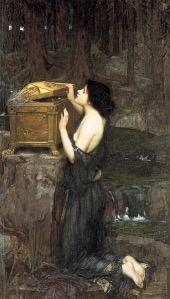
Women’s Rights and Social Constraints
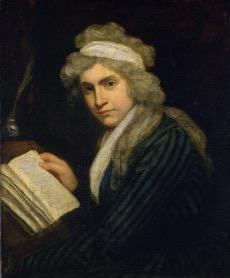

“It is vain to expect virtue from women till they are in some degree, independent of men, nay it is vain to expect that strength of natural affection which would make them good wives and mothers, whilst they are absolutely dependant on their husbands they will be cunning, mean and selfish.”
– From A Vindication for the Rights of Women by Mary Wollstonecraft
Wollstonecraft in 1790 – 91, by John Opie
Queen Victoria
In Sayer’s play, Mary tells Percy “freedom doesn’t work quite the same way for me as it does for you,“ highlighting her awareness of the patriarchy. Byron’s feminism proves hypocritical when he berates Claire for making a witch her villain, shaming her while ignoring his own male privilege.
Women in Mary’s era faced severe restrictions.They couldn’t vote or enter law, business or finance. Married women became their husband’s legal property, including any real estate in their name. Single women past their twenties were stigmatized as “spinsters.“ Most worked domestically, while educated women earned only 40% of men’s wages as clerks or teachers. The witch trials of the 1600s had left a fearful impression. Women pursuing higher education or traditional healing practices risked
accusations of witchcraft, leading to social exclusion, harassment, and violence.
Mary Shelley’s mother, Mary Wollstonecraft, advocated for women’s equality in A Vindication of the Rights of Women but was ostracised as a “hyena in a petticoat.“
Even Queen Victoria condemned women’s rights as “wicked folly,“ reinforcing women as “helpmates of man.“ However, much like Claire’s doting behavior in the play this could be interpreted as a move of self-preservation for the Queen, given that her powerful position was also a vulnerable one; working a system of values she had no choice but to operate within. This patriarchal system makes Mary’s literary achievement all the more remarkable.
“Feminists ought to get a good whipping. Were women to “unsex“ themselves by
claiming
equality with men, they would become the most hateful, heathen and disgusting of beings and would surely perish without male protection.”
– Queen Victoria
Nineteenth Century Queers
In Sayer’s play, Claire accuses Mary of being “Tuzzy Muzzy“ for Marta –a line inspired by Mary’s own later confession: “I was so ready to give myself away – and being afraid of men, I was apt to get tousy-mousy for women.“ “Tousy-mousy“ was 19thcentury sexual slang, with “tuzzymuzzy“ meaning vagina.
Mary was by her own admission attracted to both men and women. Some literary theorists suggest Frankenstein is an allegory for queer experience and societal rejection. Homosexuality remained illegal throughout the 19th-century, condemned by church and state. Punishments ranged from fines to imprisonment and public execution. The queer community operated like a secret society, using coded language and dress for safe identification.
Cross-dressing events like the Hulme Fancy Dress Ball provided expression but drew police raids – 47 men were arrested in 1880 for “abominable“ crimes.
Rising homophobic persecution forced queer artists to flee England. Lord Byron himself escaped to Switzerland in 1816 after sexual scandals, seeking refuge in a Europe, which held hope for alternative ways of life after liberating changes such as the declaration of Swiss Independence and the French Revolution.

Simeon Solomon’s artistic career was cut tragically short after he was arrested for homosexual acts in 1873.
Painting by Simeon Solomon Sappho and Erinna in a Garden at Mytilene (1864)
Scientific Revolution and The Enlightenment
The early 1800s marked the end of the Age of Enlightenment, when scientific method challenged religious authority and previously accepted ideas. This cultural upheaval promoted church-state separation and human rights advocacy.
Science was brand new – the word “scientist“ wasn’t coined until 1833, with practitioners called “natural philosophers.“ Mary Shelley created the first “mad scientist“ archetype in Victor Frankenstein, prophetically anticipating that scientific discoveries could be as frightening as ancient witchcraft.
Galvanism and Animal Electricity
In Sayer’s play, “Galvanism“ enters the group’s drug-fueled discussions about creating life and cheating death. Italian anatomist Luigi Galvani’s 1780s experiments proved electrical stimulation could animate dead tissue. While previous theories suggested fluids or “animal spirits“ carried bodily messages, 18th-century science proposed electricity as the transmitting substance.
Galvani’s breakthrough came accidentally when a dead frog near an electrical machine contracted violently when touched by his scalpel. He repeated experiments under various conditions, eventually using thunderstorms to demonstrate that atmospheric electricity could animate dead animal limbs. This scientific discovery suggested the terrifying possibility of reanimating corpses – tthe foundation of Victor Frankenstein’s experiments.
Byron’s Famous Challenge
Byron’s challenge to his fellow writers to compete with each other in writing a gothic-horror story was very real.
The accounts of Percy Shelly, Polidori, Claire and Mary all note how this competition evolved from picking up Fantasmagoriana and reading its collected stories aloud together.


Making the Play
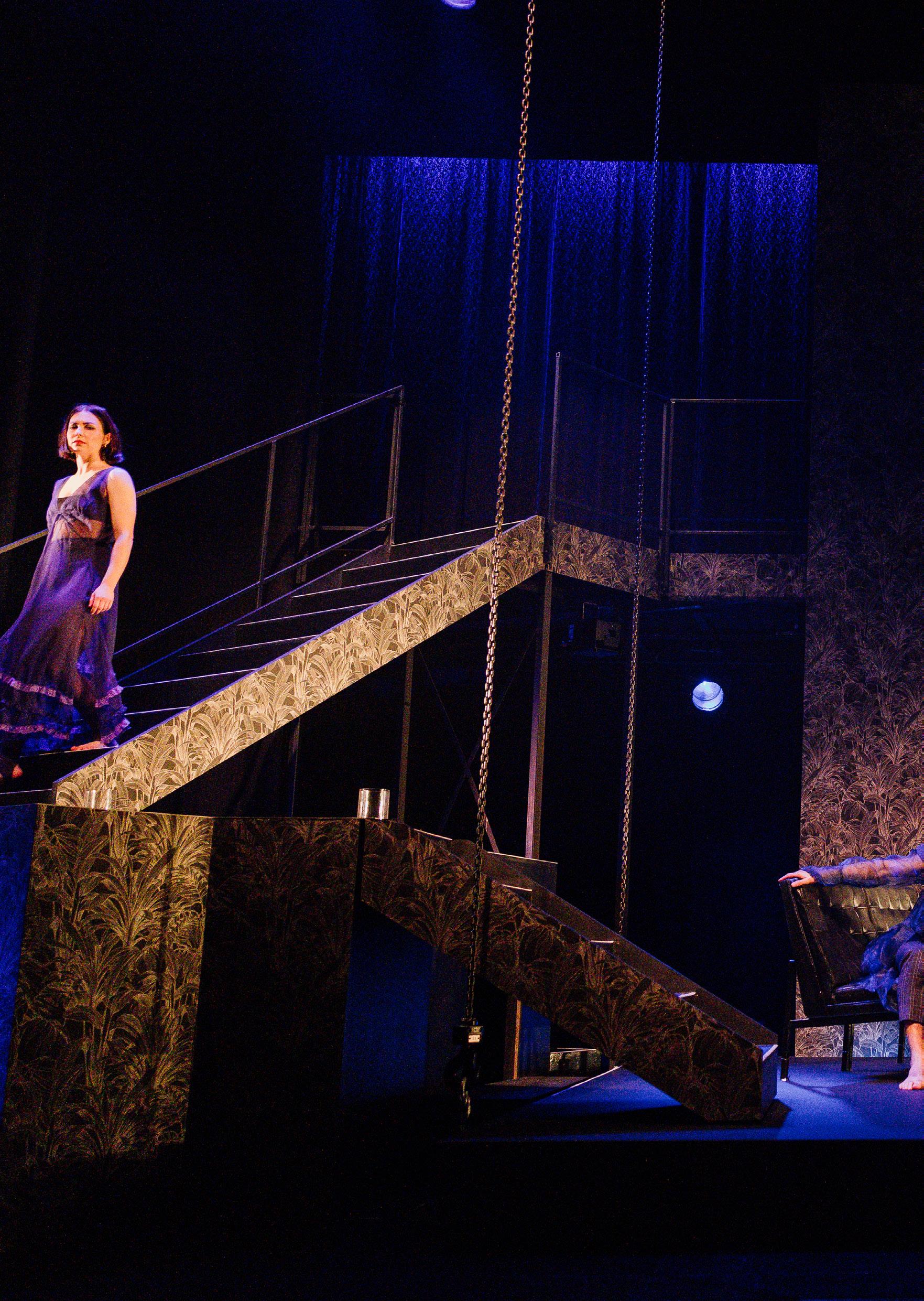
This section takes you behind the scenes with artefacts from the rehearsal room, key design concept insights, and notes to and from the cast, giving you a unique window into the creative process.
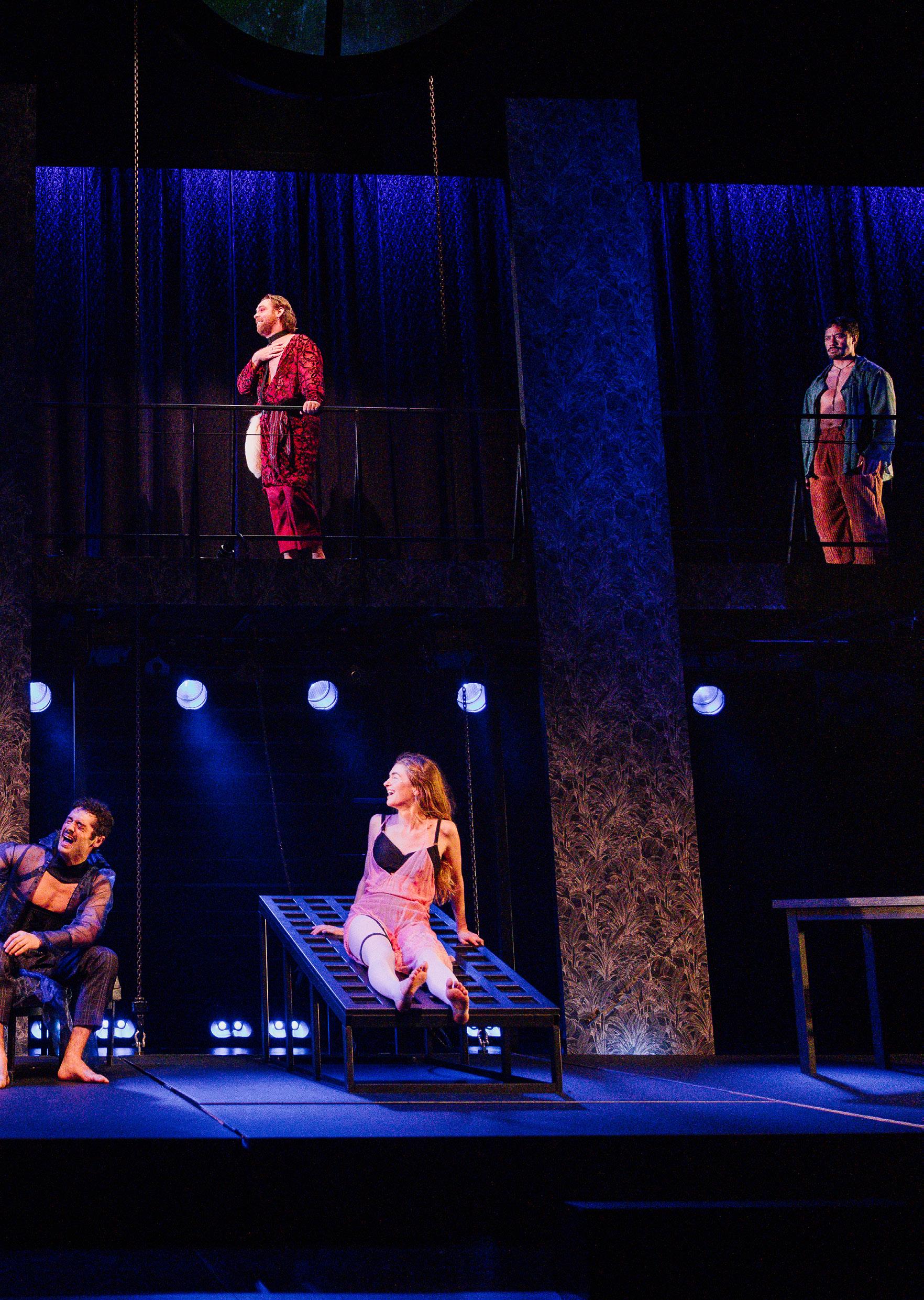
Set Design
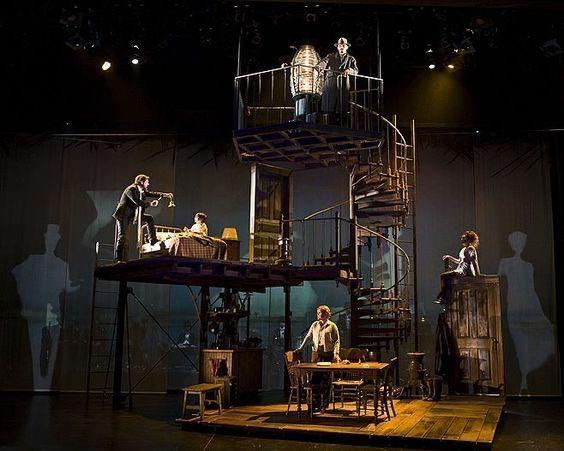
“We want to create a piece of theatre, we want it to be 100 percent theatrical, we’re not trying to create real life on stage, we’re not trying to pretend that this isn’t a play and that they aren’t actors so you can see all the lights…We’re stripping out everything from the theatre as much as possible.”
– Oliver Driver
Whisper House, designed by Michael Schweikardt. Old Globe, San Diego, Calif.
Driver’s vision for the play is not to present a version of reality, but a heightened theatrical world that celebrates its own artifice. This philosophy led to John Verryt’s deliberately “exposed“ set design where audiences can see the lighting rig and “the back wall of the theatre... from the beginning, all the way to the end.“
“As you can see it’s all black“ John Verryt explains that this choice was made in part to contrast with the brightly colored costumes, elaborating that the black lace curtain at the back of the stage “adds a softer texture, something organic and will also work off the costumes which are quite frilly and lacy“.
After lightning strikes the stage, the set transforms, and chaos ensues. Verryt designed the bookshelf to tilt forward so all the books would fall out onstage and designed platforms so they could be raised and skewed to different angles.
“I like to think of it as this big force that has come down from the sky, like smashed down into the center of the earth and everything
starts to lift…like there’s been an earthquake,“ John explains. Driver elaborates: “The idea being that through the second deck... everything kind of goes and kind of crashes in on itself and breaks and twists.“
This multi-level playground particularly excites Tom Clarke, who plays Byron: “I haven’t been on a set where I get to be on a balcony! What we’ve been doing is about depth and height... It’s very beautiful having different kinds of configurations and I get excited about the depth and the darkness and the height when it comes to doing stuff that feels like a status play. The stairs! Those stairs will be gorgeous.“
The design creates “lots of areas where we can help people watching and seeing and when we get to the second half, the creature being able to kind of move and disappear“ - a space that supports both intimate character work and spectacular transformation, embodying Driver’s vision of theatre that “embraces“ rather than hides its theatrical nature.
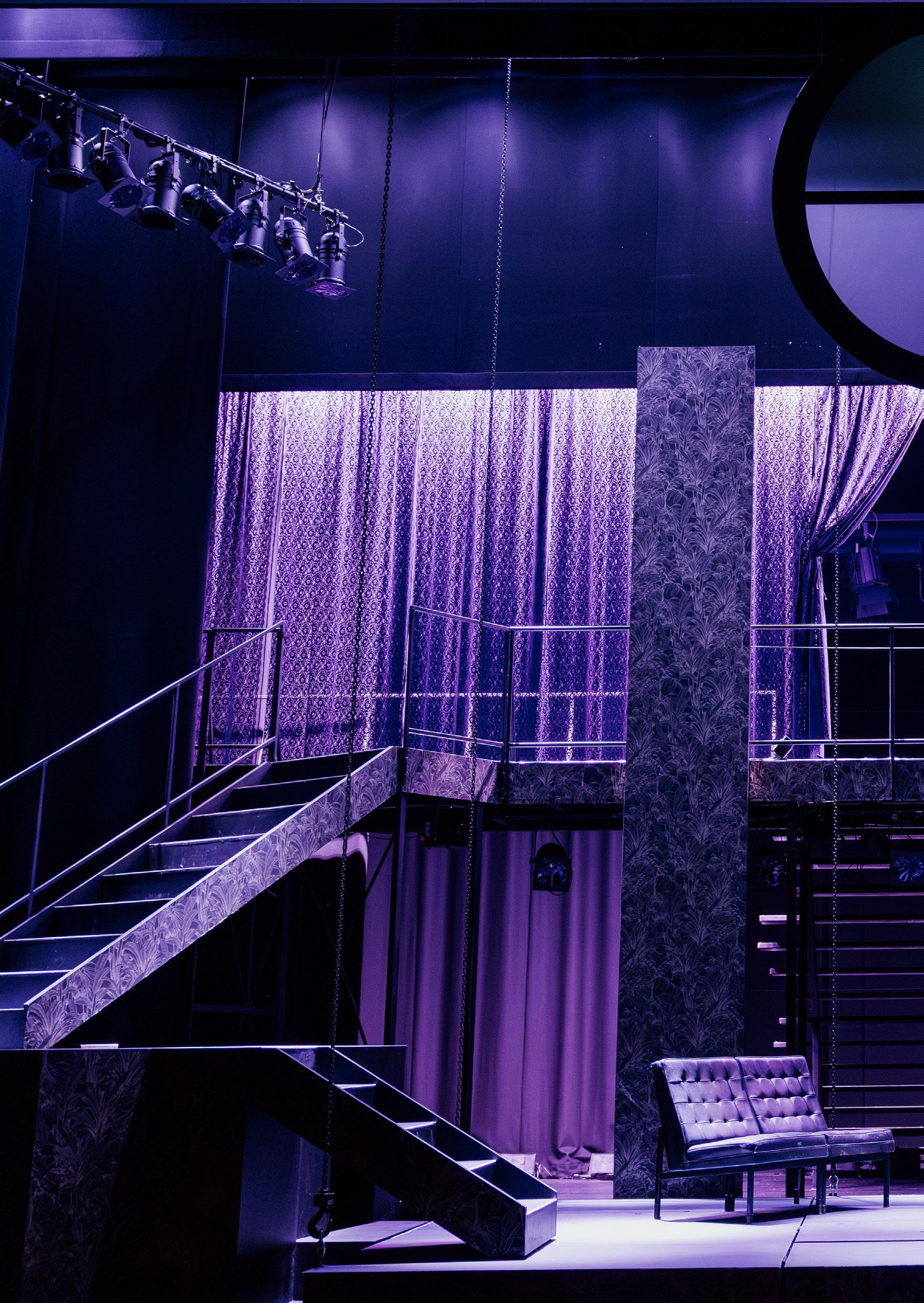
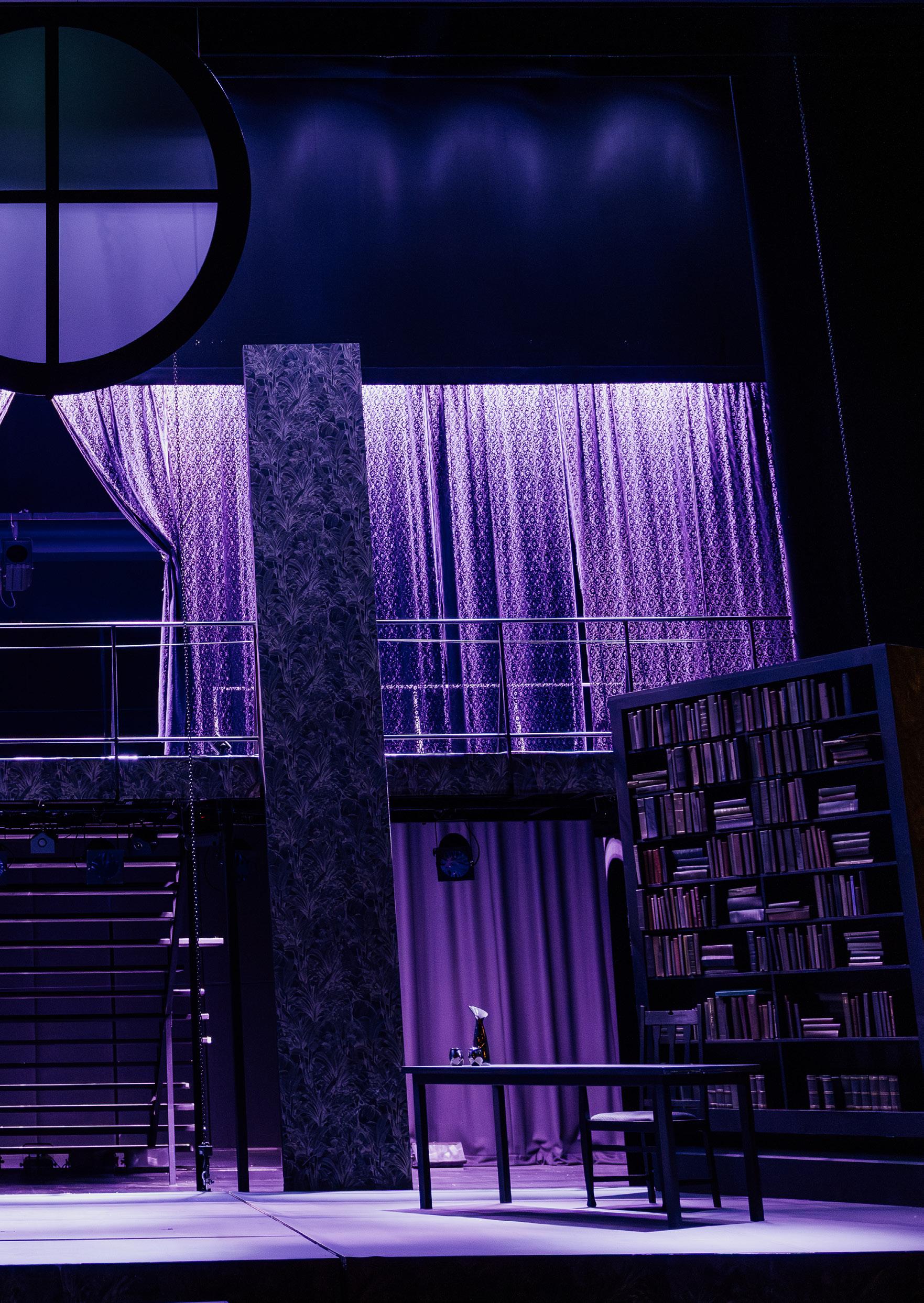
Sound Design

The sound for MARY: The Birth of Frankenstein was designed by Leon Radojkovic, who approached the project with both historical authenticity and experimental edge.
Early in the rehearsal process, Leon was still experimenting with the soundscape, explaining his approach: “We’re looking at stuff that sort of period-ish. So strings will be the main... probably a quartet made up of violin, viola, cello and double bass. Maybe we need a second violin, not sure yet. But that will be the background of the sound. We’re also going to have a harpsichord.“
Leon’s commitment to authentic sound extends to the storm sequences: “We’re trying to avoid using sound libraries for the thunder and lightning... instead using all physical percussion, like big kettle drums or bass drums, cymbals and stuff.“ This live approach aligns with the production’s theatrical philosophy of embracing rather than hiding the craft.
He’s also considering incorporating a Swiss alphorn - “a really beautiful sounding instrument” that would connect to the Swiss setting, though it “only plays about three notes,“ creating interesting compositional constraints.
Aesthetically, Leon describes the sound as “quite sort of spiky, not heaps of harmony“. He’s aiming for a sense of romance mixed with doom.
The score includes one modern commercial song during “the drug taking montage,“ designed to capture the intensity and subsequent comedown of the characters’ pharmaceutical journey. True to the collaborative spirit of the production, Leon admits “we’re not recording the music until two or three weeks time“ - allowing the sound design to develop organically alongside the other elements, asking of each scene: “is music necessary... and often, it’s not.“


Lighting and Lightning
“In this production we have lighting designers and lightning designers.” – the distinction Oliver Driver makes reveals the ambitious scope of the lighting design for MARY: The Birth of Frankenstein.
Jo Kilgour handles the theatre lighting design, while installation artist Angus Muir creates the spectacular lightning effects. As Driver explains, "If you've ever been to any light event in the city... That's Angus Muir. He's designed that."
The lighting design is as much based around the strategic use of shadows and darkness as it is the shocking moments of illumination. Kilgour's use of shadow to keep the creature hidden maintains audience suspense, following Driver's philosophy that "it's like Jaws or Alien. In the great movies you never see monster" - the power lies in what remains unseen”.

For the lightning sequence, Muir will "use lasers to try and fill the whole theatre with light and electricity and chaos, but for a very short period of time, so it doesn't feel like a laser light show, it just feels like raw electrical energy. This momentary sensory overload then plunges into another crucial technique: "True Dark."
Driver explains his intentions: "We're not trying to make horror where you will get jump scares. It's very hard to do that in theatre, because we've just got one wide shot... the way film makes you jump, it cuts to the monster, which we can't do. But we want to make it foreboding and we want to make it scary... so after the lightning, we're going to go to a full blackout in the theatre. We're working to cover up the exit signs and shut down all of the lights, so that we can get true dark in the theatre and then just have the audience sit in that true dark."
This commitment to using "every theatrical trick that we can" transforms lighting into a weapon, manipulating the audience's fears through carefully orchestrated darkness and blazing revelation.
Costume
Costume designer Sarah Voon brings her film and television experience to her first theatrical production, creating what Driver describes as an “incredible vision“ inspired by “Poor Things.“
Voon takes the historical foundation of 1816 – “kind of an awful period“ for fashion – and modernises it dramatically, creating costumes that “still feels historical but it’s absolutely not.“
Sarah creates exaggerated silhouettes and color palettes for each of the characters, that are distinct from each other, but occupy the same fantastical world. We see the cast in bright purples, reds, pinks, golds, ruffles, silk and transparent organza. Against the “all black and all dark“ set, the “costumes are all bright and all wild,“ with Byron commanding attention in red as the “spectacular creature“ he was historically known
to be, while Polidori appears as the “fruitiest character“ in his own vibrant palette.
In Marta’s case, her color palette is more muted and her black lace facial covering, in harmony with the dark colors and lace elements of the set conveys the idea that she is “part of the house“.
The costume progression mirrors the play’s journey from reality into fantasy. The characters begin “in big coats“ before shedding layers as they get comfortable. Then, as Driver explains, “in the second act, we were really kind of diverging from reality“ – after the drugs and Marta’s death, “they get a bit more fruity.“
The underlayers no longer create sharp silhouettes but reveal the actors’ bodies, suggesting how the characters themselves begin to blur and blend as their world warps around them.
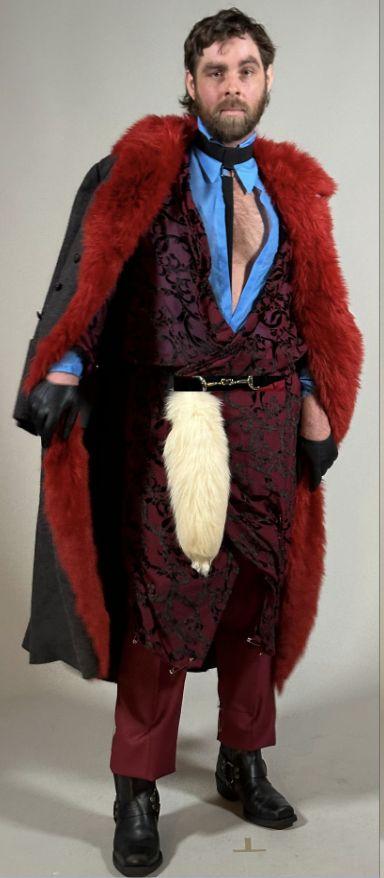
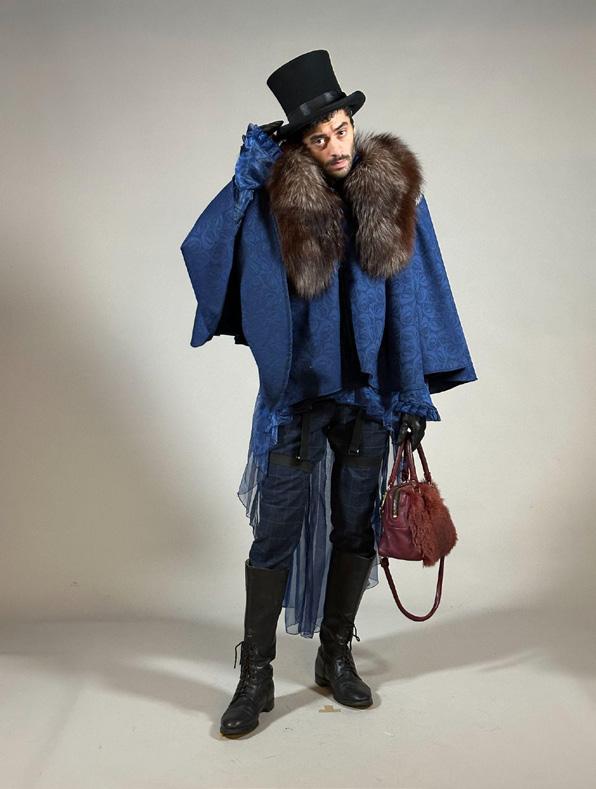
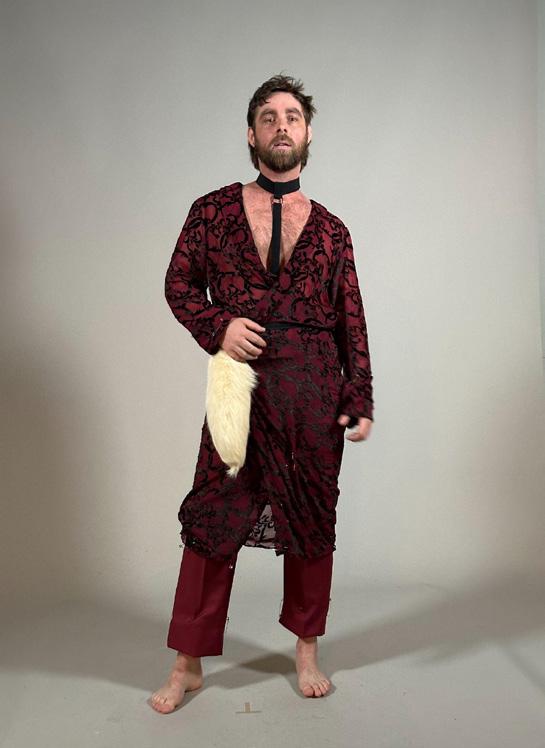
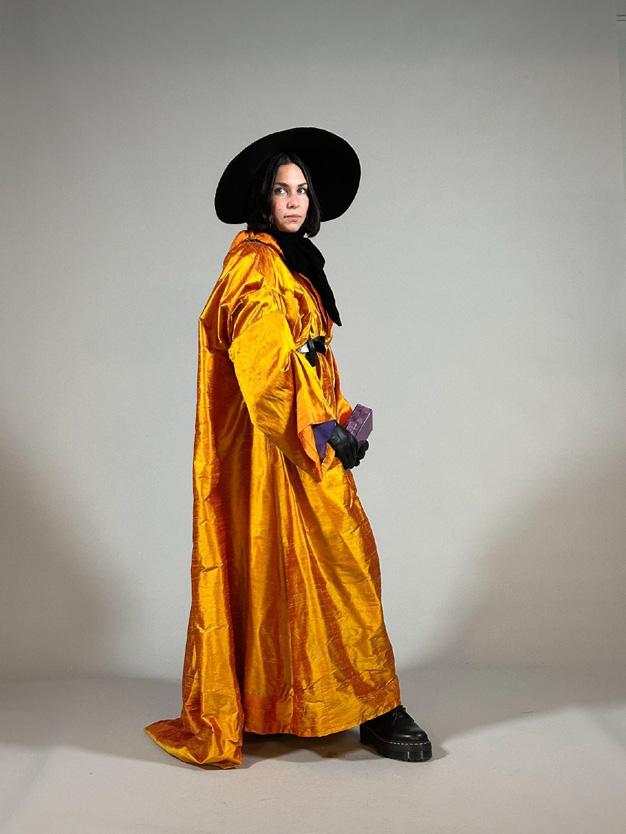
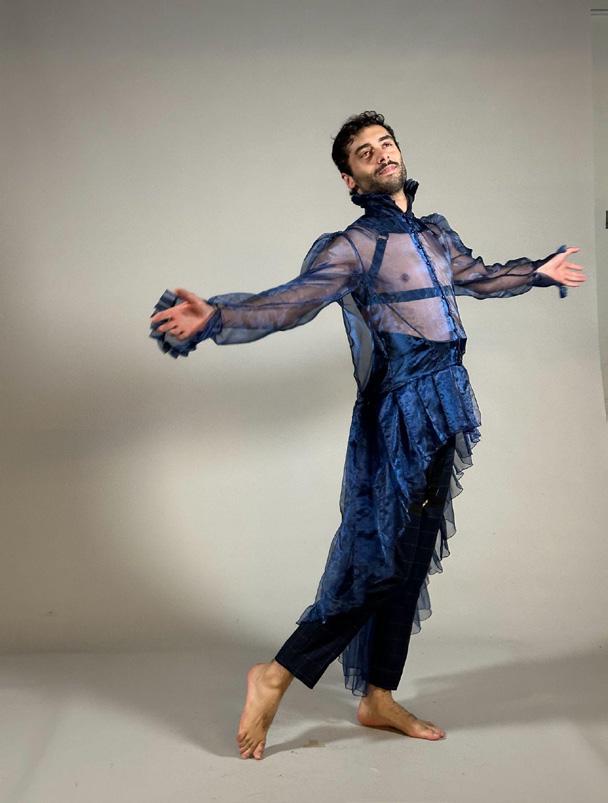
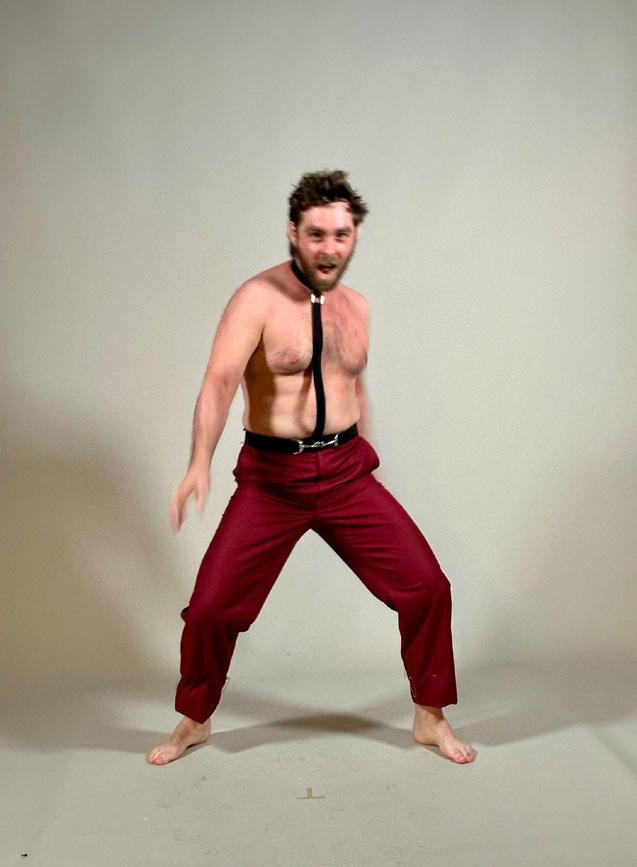
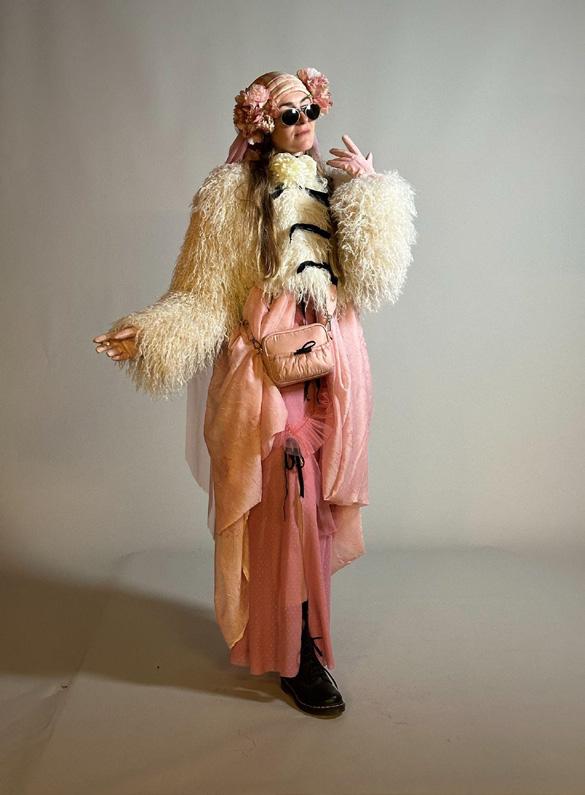
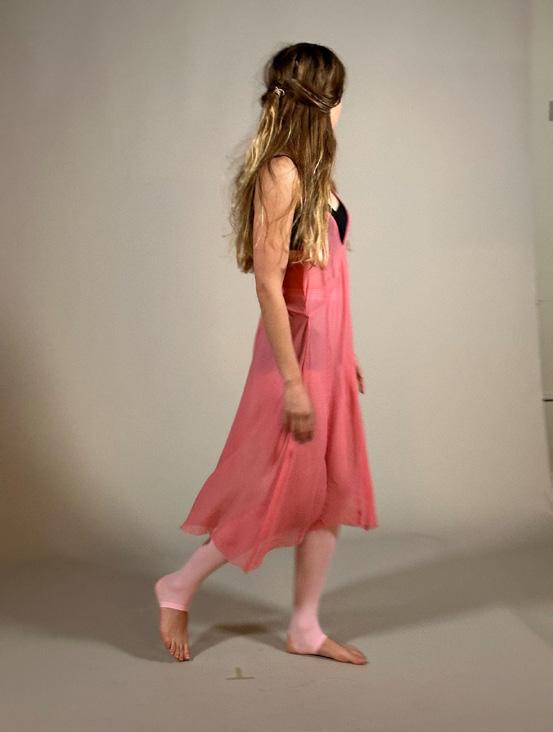



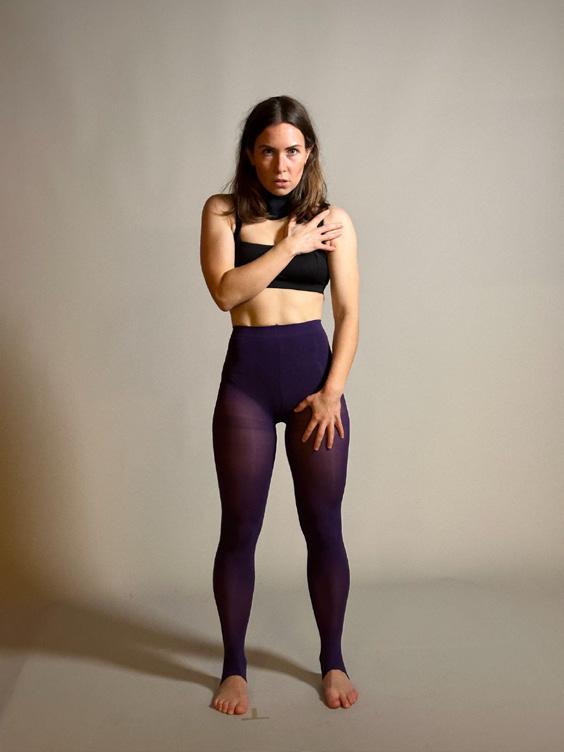
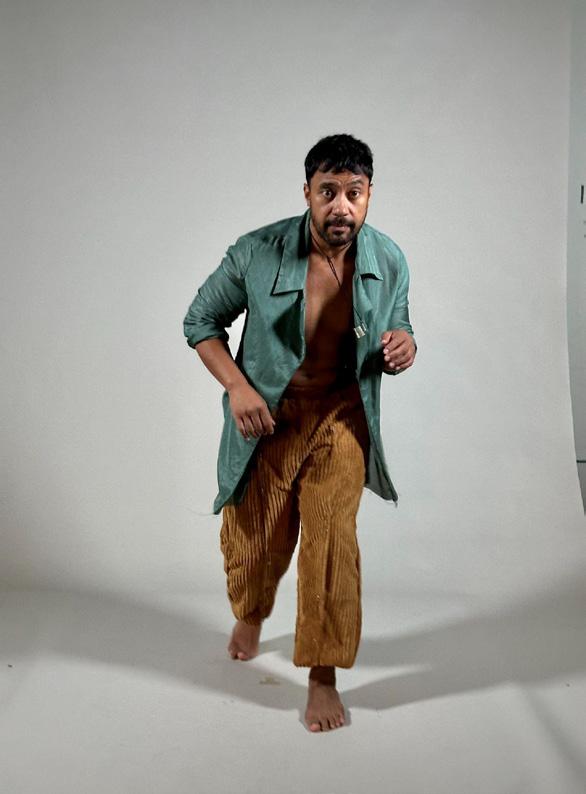
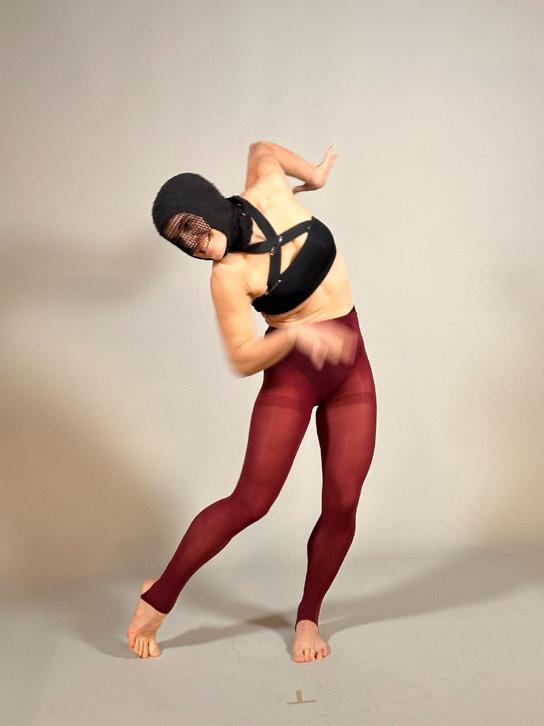


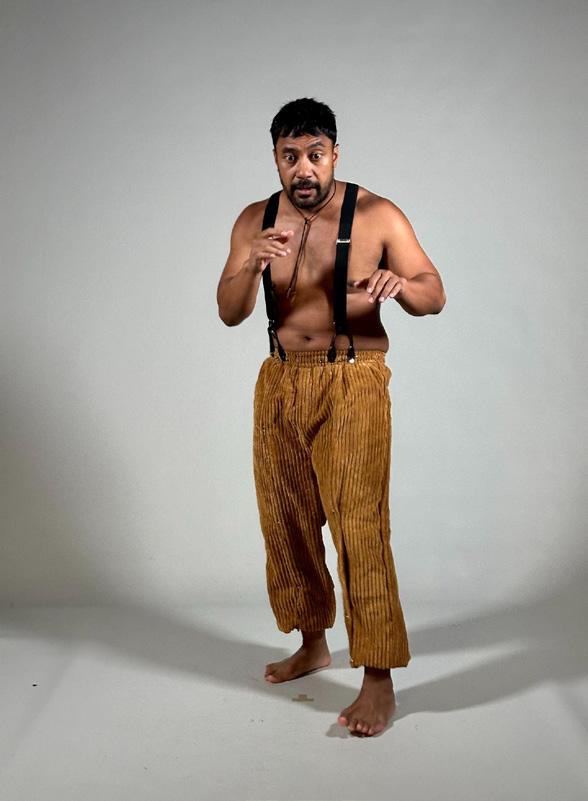
Meet the Characters
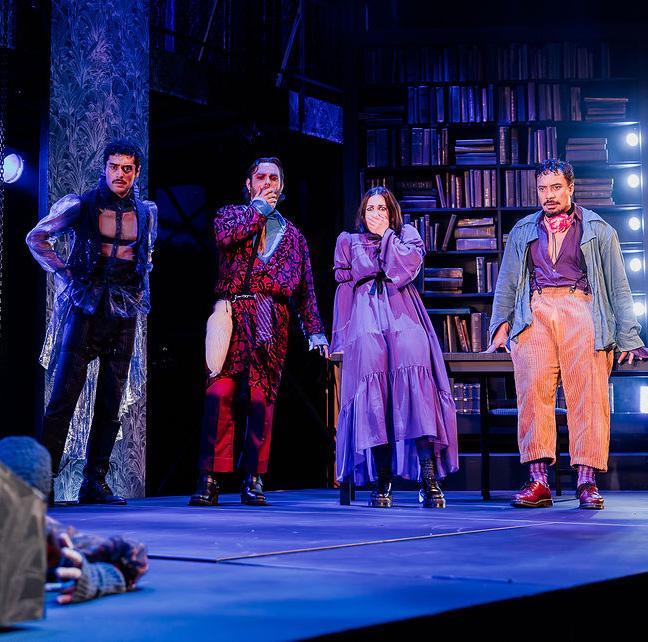
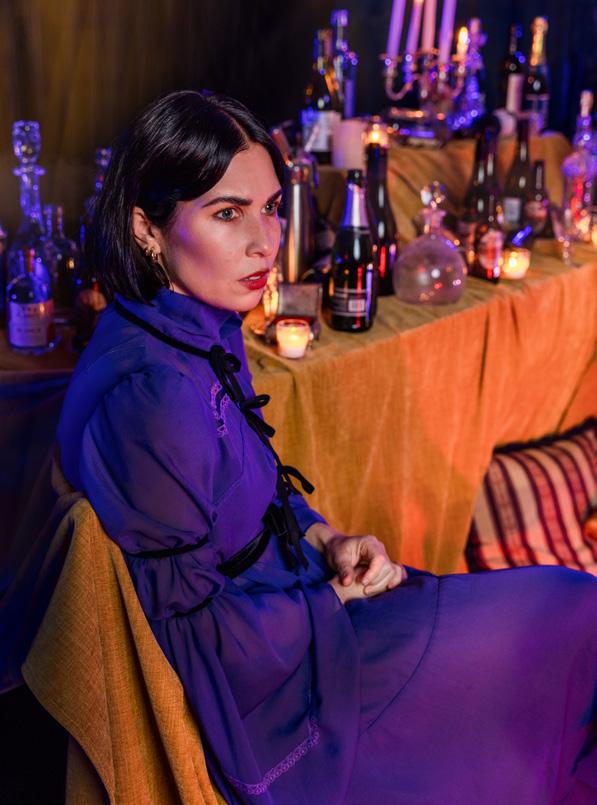
MARY SHELLEY
“Monsters are not born, they are created“
– Mary Shelley in MARY: The Birth of Frankenstein.
“Beware; for I am fearless, and therefore powerful.“
– Words from Frankenstein’s monster in Mary Shelley’s Frankenstein: Or the Modern Prometheus.
The woman who wrote the famous novel Frankenstein: Or the Modern Prometheus, Mary Shelley – or Mary Wollstonecraft Godwin as she was known before her marriage to Percy Shelley, was the daughter of well-known writers Mary Wollstonecraft and William Godwin. Mary Wollstonecraft, regarded as a pioneer of feminist philosophy, died eleven days after Mary’s birth in London, 1797, leaving Mary’s
upbringing in the hands of her father, William Godwin.
Notably, Godwin was one of the first promoters of anarchist ideology; his writings are marked by a strong opposition to monogamy and religion. Mary herself claimed that since birth she had been “nursed and fed with glory.“ She not only felt the burden of her birth being the cause of her mother’s death, but also the weight of her father’s expectations for her to be brought up like a “true philosopher“ and to follow in her mother’s footsteps.
We meet Jess Sayer’s Mary in the midst of her chaotic relationship with Percy Shelley and grieving the loss of her first child; in the play she is portrayed by Liv Tennant.

CLAIRE CLAIRMONT
The wily stepsister of Mary Shelley, Claire Clairmont was the daughter of William Godwin and Mary Jane Clairmont, who succeeded Mary Wollstonecraft as Godwin’s second wife and was also a writer and publisher. Claire was brought up in an environment of intellectual competition and was naturally pitted against her stepsister Mary. “In our family, if you cannot write an epic poem or novel, that by its originality knocks all other novels on the head, you are a despicable creature, not worth acknowledging,“ writes a young Claire Clairmont, who would go on to orchestrate a meeting of minds in Geneva, hoping to curry favor with the renowned poet Lord Byron, with whom she had instigated a flirtatious exchange of letters.
In the play, Claire and Byron have already become entangled and Claire is already pregnant—a slight deviation from history, as Claire had not yet met Byron until arriving in Geneva with Percy and Mary in 1816. However, after spending the summer in Switzerland with Byron, Claire did end up having his child in 1817: a baby girl she named Allegra.
Claire is played by Timmie Cameron.

LORD BYRON
Described as “mad, bad and dangerous to know,“ the English poet Lord Byron was the first writer to receive fan mail from readers of his work and is often considered to be the first international celebrity. As famous for his beauty as for his poetry, Byron was once discovered by his friend Scrope Davies sleeping with curling papers in his hair. Davies awoke him by crying out “Sleeping Beauty!“ which enraged Byron. Davies explained that he thought his hair curled naturally. “Yes naturally every night,“ Byron replied, “but do not, my dear Scrope, let the cat out of the bag, for I am as vain of my curls as a girl of sixteen.“
In 1816, as he fled England, Byron travelled in a replica of Napoleon Bonaparte’s carriage with an entourage of footmen and exotic pets such as a peacock and a monkey. A known womanizer, Byron made no secret of the fact that he
held a degree of disdain for women, as he once stated:
“Now my beau ideal would be a woman with talent enough to be able to understand and value mine, but not sufficient enough to shine herself. All men with pretensions desire this, though few have courage to avow it.“
Byron’s personal letters and historical accounts of his relationships reveal that he enjoyed the company of both men and women, and although his relationships with men were not a public affair, they were not entirely hidden. He is perhaps best known for his satirical poem Don Juan, in which he models the philandering Spanish folk-character of Don Juan after himself.
In Mary: The Birth of Frankenstein, Lord Byron is played by Tom Clarke.
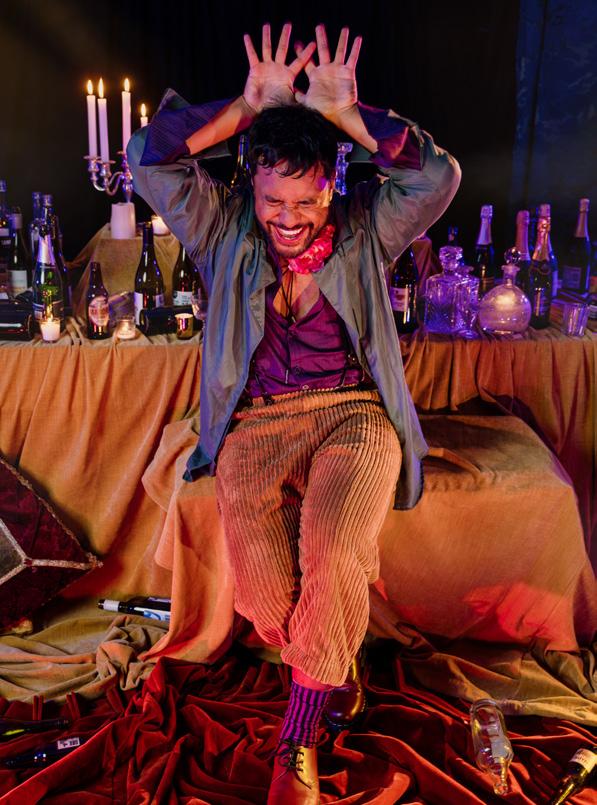
PERCY SHELLEY
Expelled from Oxford for publishing a pamphlet on “The Necessity of Atheism“ and born into a wealthy aristocratic family, the English poet Percy Shelley was eventually financially cut off by his father due to his radical political beliefs. He was hounded by creditors throughout his life as he financed his lifestyle by taking out loans on his yetto-be-received inheritance. Percy was fascinated by science from childhood, particularly electricity and astronomy. During their schooling, his cousin recalled how Percy would speculate that people would one day travel to different planets and that in the same way that schoolboys were promoted from grade to grade, humans “should rise to a progressive state from planet to planet till we become gods.“ Percy believed in the equality of all men and also displayed a keen
interest in secret societies such as the Freemasons and the Illuminati. Being a devotee of both Godwin and Wollstonecraft, like them, he believed in free love and dreamed of creating a society that reflected his ideal principles. A mutable partner, he left his first wife to pursue Mary, and after Mary became pregnant with their first child, it’s likely that he began an affair with Claire – a sore point for Mary which is alluded to in the play.
Percy Shelley was also a known user of laudanum (a mixture of opium and alcohol), which may have contributed to the worsening of his mental health and hallucinations that were a well-documented experience throughout his life. His episodes included seeing a doppelganger of himself that he recounts once approaching him with the question “How long do you mean to be content?“ – a line that Jess Sayer re-attributes to Lord Byron in her play but that is still directed to Percy. In this way, Sayer masterfully details her play with the true experiences and original words from the real people that inspired her story.
In this production, Percy is played by Dominic Ona-Ariki.

JOHN POLIDORI
John Polidori was the son of the Italian writer Gaetano Polidori. Born and raised in London, throughout his early life he wanted to become a Catholic priest, but his father forbade it, sending him to medical school instead. Although he earned his medical degree at 19 years old, by law a doctor could not practice medicine in London until the age of 26, leading him to be employed by Lord Byron, who hired him to be his personal physician on his travels through Europe.
Polidori harboured a secret desire to be a writer, but his attempts at writing were mocked by his illustrious boss. However, inspired by a fragment of Byron’s unfinished ghost story, Polidori wrote of another iconic monster – The Vampyre. Two years after Mary published Frankenstein, The Vampyre was
published and falsely attributed to Lord Byron due to an initial misrepresentation by the publishing company, possibly in an attempt to capitalize on Byron’s fame. Despite being very well received, Byron denied any involvement and Polidori’s authorship was later recognized. Polidori’s story was followed by Bram Stoker’s Dracula and had an undeniable influence on vampire fiction, cementing the archetypal vampire as a seductive, aristocratic fiend.
Highly intelligent but overshadowed, in the play Polidori is played by Arlo Green.
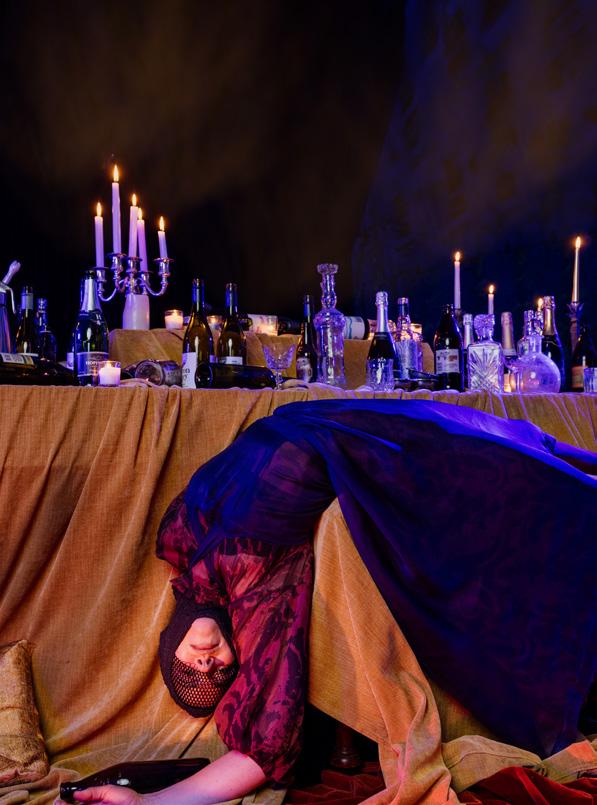
MARTA/THE MONSTER
In the play, Marta is the servant of Lord Byron and the only character who is not based on a known historical figure. Described by Byron as “an ancient mute“ at the beginning of the play, we get the sense that she has been sweeping the floors of the Villa Diodati for eternity before Byron enters, trekking in mud and undoing all her work. Marta later becomes the target of the
group’s experiments with galvanism; she is killed and then resurrected with lightning. Through this transformation, she not only becomes a monster but somehow an extension of Mary’s consciousness. Almost like a mother and a child, the monster and Mary are attuned to each other and can feel each other’s pain.
Marta is played by Emily Adams.
Meet the Actors
Auckland Theatre Company’s Teaching Artist, Emily Hurley, interviewed Tom Clarke (Byron), Dominic Ona-Ariki (Percy), and Timmie Cameron (Claire) about their approach to creating the complex characters in Jess Sayer’s MARY: The Birth of Frankenstein. The actors revealed how they embody both historical figures and their monstrous potential, transforming literary legends into living, breathing psychological studies of power, shame, and survival.
Emily started by asking the cast about their characters’ monstrous qualities.
CLAIRE CLAIRMONT: THE CAGED COMPETITOR
Timmie
Cameron
Describing Claire’s monstrous qualities, Timmie explains: “I think Claire’s monstrous qualities are her aggressively competitive nature and also she only knows conditional love... love is an exchange, everything’s an exchange and in a transaction and she has a lot of repressed rage as did many femme humans of the time and nowhere to put it aside from her own sister.“ This creates a volatile creature: “if she was a scary monster, I think she’d probably be like some sort of... demon human that crawls on walls and has multiple arms and is totally chaotic and you just don’t know what their next move is going to be because she’s so volatile.“
Physically, Timmie transforms Claire into a calculating predator: “Claire’s definitely like a cat. I mean at some point she literally pushes a tray off a table to get people’s attention. But she’s a very smart person and she
also is aware of her feminine assets so she uses her body to get attention – she kind of slinks around the place.“ This strategic physicality reflects her survival instincts in a patriarchal world where “competitive nature for security... comes at the cost of familial relationships.“
Timmie describes her vocal approach: “I’ve been playing around with the sort of sing-songy quality to her voice... the tone of her voice when she’s around the boys versus when she’s just herself in private moments, which is quite different and probably sounds slightly - she’s more grounded when she’s being more truthful, it doesn’t sound so sing-songy.“ Tom aptly compares this to “Paris Hilton“ with her distinct “public voice and private voice,“ while Timmie notes Claire’s weaponisation of language: “using words to hurt people to get a point across so like an emphasis on certain words.“
PERCY SHELLEY: THE SHADOWED POET
Dominic Ona-Ariki
When describing Percy’s monster, Dominic explains: “Percy’s ambition becomes quite selfish... he apologises a lot, and I think he doesn’t get a chance to be as honest as he would want to be. A lot of that comes from him trying to work for his father’s approval a lot of the time, or the approval of people he admires.“ This creates a psychological shadow: “It feels like a big black cloud... so it’s just like this big black shadow that hovers over Percy... I’d imagine Percy’s monster just to be a big, black, overbearing shadow, quite slim, but really sharp claws that just forever hover over your head.“
This internal instability translates into physical uncertainty. Dominic describes Percy’s movement: “Percy’s weight always feels like it’s off to one side and never solid in anything and the only real time
you feel when Percy is solid is when he doesn’t have to put on the mask or the playfulness and that’s when he’s talking to Mary.“ With Byron, however, “he’s never engaging at an eye to eye level; it’s always like trying to come underneath right, it’s a bit subservient in that sense.“
Percy’s vocal desperation stems from deep insecurity. As Dominic notes: “Percy’s voice is quite loud and up in the air but I think the main motive of that is insecurity... that thing of ’loudest person in the room is the weakest person in the room’ I think that’s pretty true for Percy.“ This vocal energy serves one crucial purpose: “I don’t want to disappoint Byron because if I disappoint Byron... If Byron’s not enjoying himself the ball has fallen on the floor.“
Marta is played by Emily Adams.
LORD BYRON: THE BEAUTIFUL MONSTER
Tom Clarke
Tom Clarke’s Byron emerges as the production’s most paradoxical figure—a “vampire angel“ who is simultaneously magnificent and terrifying. When asked about Byron’s monstrous qualities, Tom explains: “Byron is a person of vice so he’s a full hedonist and his whole goal is to feel good at all times so he’s always hungry to live more life and that often comes at the expense of people’s humanity.“ This pursuit of pleasure masks deeper trauma: “he had a whole lot of violence in his past and so everything is about ’I will never be weak, I will always be powerful’.“
Tom’s physical approach centers on aristocratic entitlement. Working with director Oli, he’s developed a rigid posturing: “Byron has a very proud chest, a straight spine, and
I’m not allowed to have my hands anywhere below my hip bones.“ Using Laban movement qualities, Byron becomes “a ringer and a slasher,“ moving with sustained heaviness or “wild cuts,“ while Tom tries to “peacock out a little bit— that’s the animal that I’m trying to use to mimic that sort of display.“
This calculated control collapses during drug scenes when Tom becomes “as floppy as possible,“ revealing Byron’s complete surrender to hedonism. Vocally, Byron commands attention through sheer presence: “I’m trying to lean into having a voice that is booming and like molasses and honey, sometimes it’s loose, a bit languorous, shifting in pitch quite a lot, often louder than most of the other people in the room.“
Classroom Activities
This section is specifically designed to help you unpack the show and utilise the information in this pack in the classroom with your kaiako/ teacher. Each section references information in the pack and is structured in the following way:
• Pre-reading/Unpacking: A literacy based activity to analyse the material in this pack
• In the Classroom: Brainstorming, prompt and practical activities to provoke discussion and help you explore the education material provided
• Revise: Questions for you to complete individually in preparation for your AS91518 Exam in November. These questions have been specifically developed from the 2025 Exam Specifications provided via this link: Level 3 Assessment Specifications
EXPLORING HOW AND WHY JESS SAYER AND OLIVER DRIVER BROUGHT MARY TO THE STAGE
MARY: The Birth of Frankenstein has been a collaboration between playwright and director, with adaptations and adjustments to the script coming to life in the rehearsal room. When you are revising for your live performance exam, you will want to unpack what you think the Playwright and Director intended to communicate through their choices. In the case of MARY: The Birth of Frankenstein and its journey to the stage it is important to consider the show’s whakapapa - Sayer’s inspiration, what she and Driver wanted to explore in both its writing and its staging and how this came to life on stage. These activities will help you brainstorm and collate your ideas, as well as providing evidence or quotes to support your explanations and discussions around the exam questions.
PRE-READING AND LISTENING:
Use this information to inform the “In The Classroom“ activities.
• As a class listen to The Detail Podcast - Jess Sayer gives life to the author behind Frankenstein and brainstorm the important ideas
• In small groups read the Notes from the Playwright and the Director, as well as Playwright Jess Sayer on Frankenstein’s Mary Shelley and the creation of a monster:
• Highlight ideas that interest you
• Circle quotes you think would enrich an answer in an exam
• Underline and annotate ideas that link to a specific moment in the performance.
• If you recorded the post show forum, find excerpts where the Driver and/or Sayer answered questions:
• Write down ideas that interest you
• Record quotes you think would enrich an answer in a your report or exam
• Record moments in the forum that surprised you or provided more context for something you saw on stage.
IN THE CLASSROOM:
(Divide into four groups to complete the following)
Brainstorm - Conduct an initial brainstorm around Sayer’s statement that Mary Shelley’s Frankenstein is “a story about birth and creation; about rejection, being unmothered and unloved. A story that warns us about prejudice; warns us that we must create responsibly and take responsibility for those creations. Two hundred and nine years later, those warnings are as loud and urgent as ever.“
Consider:
• What does Sayer mean by as “loud and urgent as ever“
• Think about what Sayer’s purpose for writing the play is
• What did you think about at the time and what have you thought about since
• Any links to what you might have been learning in English if you are studying Gothic Literature
Discuss and extend - Each group takes one of the prompts below to discuss what you think Driver intended to communicate through his directing choices. You could also refer to anything you discussed in the previous activities as well, building on this whākaaro.
Prompts:
• Research material: Explore the research material provided. Think of examples where this is brought to life on stage through design, directing or acting choices.
• In the rehearsal room: what ideas do you think were explored in the rehearsal room and how does this connect to what you saw on stage.
• The big themes and intentions: identify the themes or intentions that Driver had for the piece or chose to highlight through design or directorial choices. Whose stories were being told and why was this important?
• Style and flair: can you identify a specific style or aesthetic in the way the performance was pulled together. What do you think Driver intended to communicate through these choices?
You will have 10 minutes to discuss and annotate around the prompt you are given as a group. Then you will rotate around the different prompts, spending 5 minutes at each, discussing and adding your own ideas. Once you are back at your original brainstorm prompt collate the ideas into bullet points and share these back to the class for discussion. Make sure you take photos of all the evidence you produce during this activity to reference during your revision later in the year.
PHYSICALISE - ABSTRACTING IDEAS AND FINDING MEANING
• Choose an idea from your brainstorming and discussion.
• Create a scene influenced in style by Mary: The Birth of Frankenstein, that is dialogue heavy, realistic in nature and is not manipulated in any way by creative use of conventions.
• Perform with no feedback
• Recreate the same scene with the exact same narrative but put these constraints in place – must be beautiful, use slow motion movement, no dialogue – only sounds/single words and play with interesting formations.
• Perform
Focus questions: which scene affected you more as an audience member and why? What enabled you to find meaning within the scene and why? What scene felt more connected to the performance you watched as a member of the audience.
REVISE - (COMPLETE THESE AS YOU STUDY FOR YOUR EXAM)
• Discuss the purpose of the performance and how the themes or ideas link to what is happening in the world; socially, politically or historically. Link your ideas to specific moments or examples from the performance.
• How did the way the performance was realised impact the style of delivery of the narrative/story?
• How does the content of the play challenge and serve the audience?
• Discuss how the director brought the story to life using Drama Components - Elements, Conventions, Techniques and Technologies.
• What do you think Oliver Driver is asking you to think about in the way he has directed MARY: The Birth of Frankenstein?
• How did the acting and staging choices affect you as an audience member?

Historical context - the creation of a gothic legacy
PRE-READING AND LISTENING: Use this information to inform the “In The Classroom“ activities.
Divide into five groups and take one of the following sections of the Historical Context section of this pack; The Prometheus Myth, Women’s Rights and Social Constraints, Nineteenth Century Queers, Scientific Revolution and The Enlightenment OR Galvanism and Animal Electricity.
• Read your section through circling ideas that link to the performance and highlighting ideas that you think are interesting
• After you have read your groups section, discuss the following:
• Examples of this historical context and the influences of this that you saw in the performance, provide physical details
• Characters that were directly connected or inspired by this historical context
• How understanding the historical context that influenced Sayer’s writing enriches your experience of the show as an audience member.
• Save any notes you have collated in a shared digital space so your class can access these when revising for their exam.
IN THE CLASSROOM:
Experiment with elements and conventions - in the same groups that you completed the pre-reading activity in develop a short piece of devised performance work that explores this research. Use the following steps to support your devising:
• Choose a key moment from the play that links to your Historical Context topic. You can either extend on the scene or use the scene as provocation for your own performance
• Use performance conventions to structure your devised performance, for example; chorus, canon, repetition, tableaux, soundscape
• Ensure that ideas from your discussion about your historical context section are evident in the way you use Conventions and Elements to devise your scene
• When you present your devising to the rest of the class, briefly highlight the important ideas that you discussed in the pre-reading activity before performing
Reflection question: how did experimenting with these ideas in performance help to deepen your understanding of the ideas in MARY: The Birth of Frankenstein?
REVISE - (COMPLETE THESE AS YOU STUDY FOR YOUR EXAM)
Drama Elements and how they draw our attention to themes, motifs and symbols:
• What were the main themes, questions and ideas evident in the performance? Link these themes, questions and ideas to specific moments or examples from the performance.
• Identify recurring symbols or motifs throughout the performance. Explain why they were important in helping you understand ideas being communicated in MARY: The Birth of Frankenstein.
• How do these themes, symbols or ideas link to the wider world of the play and what impact does this have on the audience?
• Were there moments where the content was confronting or forced you to think about something in a new light? What impact does this have on the audience and you as a member of the audience?
• Reference the wider reading from Jess Sayer, as well as research material provided in this pack and think about the impact these themes, symbols or ideas have on the lives and arcs of the characters in the play.
DRAMA CONVENTIONSSTRATEGIES ESTABLISHED TO MAKE MEANING AND CONNECT TO WIDER CONTEXT:
(NB - make sure you are familiar with what the established Drama Conventions are by discussing this with your teacher)
• Identify a moment in the performance where Drama Conventions were used to create focus, mood or atmosphere:
• Explain how the convention or combination of conventions were used in the performance
• Discuss the impact of the use of the convention or combination of conventions in this moment
• Discuss how meaning was created for you, as an audience member, in this moment
• Discuss how the use of a convention or combination of conventions in a specific moment helped you think about the big ideas and themes of the play.
• What was the wider context (socially, historically, politically or geographically) that this moment linked to?
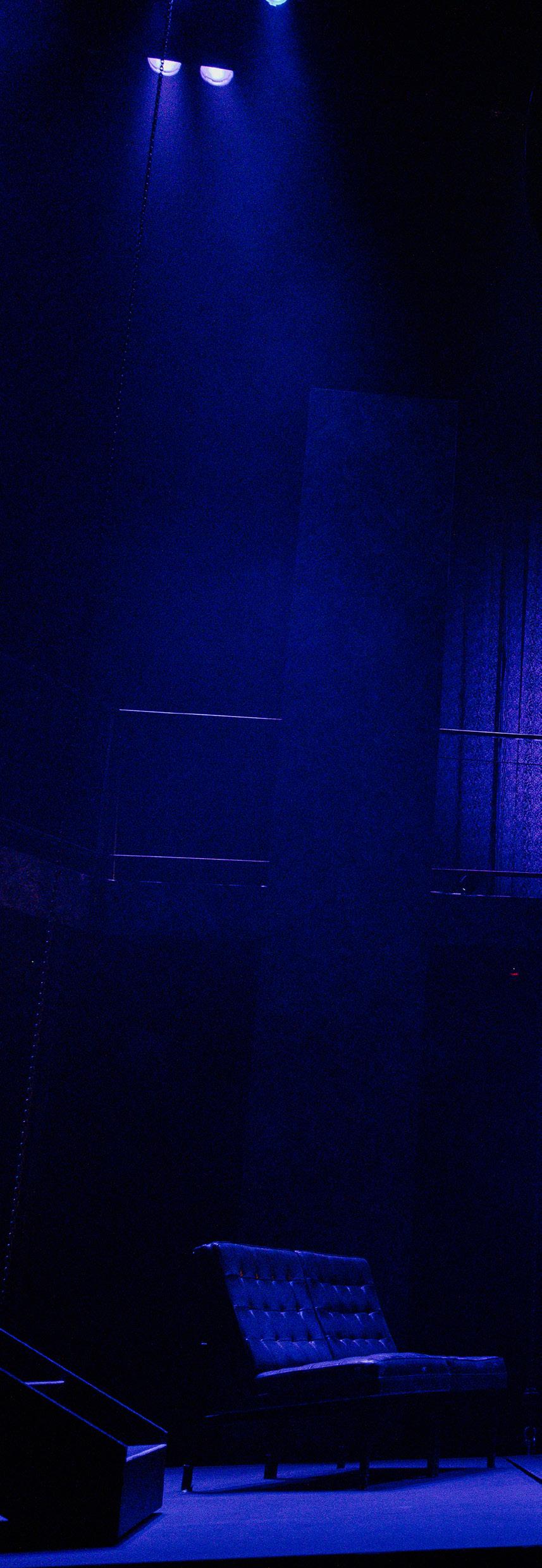
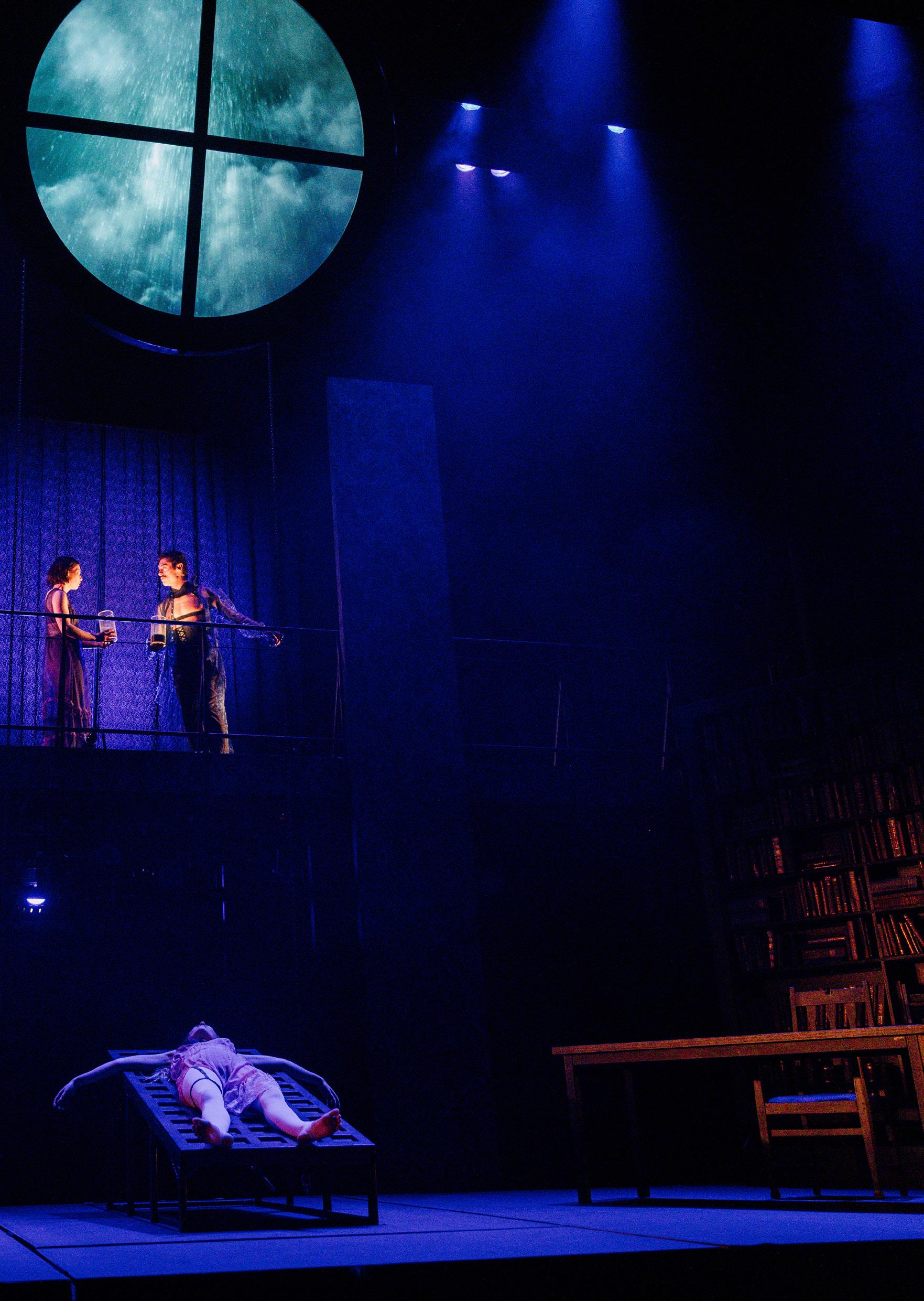
Exploring the design concepts of MARY: The Birth of Frankenstein
When we are thinking about the design or technological elements of a show, we need to explore how this supports the story being told, heightens atmosphere and tension or creates mood. MARY: The Birth of Frankenstein brings to life the creation of one of the most studied gothic novels therefore the design and set need to reflect that dark and stormy night and play an integral part in communicating the narrative. Sayer created a vivid world for Driver and the designers to work from, this section will support you to explore the design choices made and what they communicate to the audience.
PRE-READING
Using the design interviews, complete the chart below to collate important information from the pack.
Technology Designers intention Examples of how this was realised Key Quotes
E.G. costume
E.G. Lighting
IN THE CLASSROOM
Sketch and annotate key moments
- Either individually or in small groups choose a key moment where technology was used in combination to create tension OR mood OR contrast. Sketch this moment on a large piece of craft paper and annotate in detail, referencing the following:
• Colour palette, material, type of lighting, type of sound
• Symbols, motifs or ideas that are highlighted by the use of technology
• How certain characters are highlighted
• Include quotes or information from the education pack, especially what the Director or Designer was hoping to achieve
Pathetic fallacy through technology
- One of the key literary devices of a novel that is part of the Gothic canon, is the use of Pathetic Fallacy. You see this clearly in Shelley’s Frankenstein and the work of her peers, such as Bronte’s Wuthering Heights. More contemporary examples from pop culture include Baz Luhrmann’s Romeo and Juliet.
Definition: “Pathetic fallacy is often used to describe the environment. The weather and season can be described with human emotions to reflect the mood of a character or create a tone.“
What is pathetic fallacy?
- BBC Bitesize
Sayer’s MARY: The Birth of Frankenstein script and Shelley’s original novel are both influenced by the extreme weather caused by the Indonesian eruption in 1816, which you can read more about here: The Climate Event That Helped Create ’Frankenstein’ and the Bicycle.
This atmospheric environment is brought to life through the imagery of the characters’ dialogue and the use of technological design. Explore this idea through the following activity:
• As a class brainstorm all the times that the weather or atmosphere was described using human emotions, or reflected the mood of what was happening on stage
• In small groups choose one of these moments and sketch it in detail
• Annotate how lighting, sound, special effects were used in conjunction to reflect this on stage
• Add quotes or dialogue from the production
• Individually for homework, respond to the following questions;
• Why was it important for the production of MARY: The Birth of Frankenstein to reflect literary devices of the gothic novel canon on stage?
• How did the use of Pathetic Fallacy deepen your understanding of the ideas being expressed in this key moment on stage?
REVISE - (COMPLETE THESE AS YOU STUDY FOR YOUR EXAM)
• Discuss how technology or design was used during a climatic moment in the performance? What do you think was at stake within the scene?
• What was the impact of the way the design, directorial, and acting choices worked together? Choose a moment that surprised, shocked, or excited you to talk about.
• Discuss why the use of sound and lighting design was integral to this performance? Focus on the mood created by sound choices, use of colour and the shapes created by the angles or composition of lighting.
• How were design and directorial elements (props, setting, AV,
costuming, audience positioning and interaction) and the Drama Elements used to build the performance? How did this make you feel as a member of the audience?
TECHNOLOGY: link your ideas to specific moments or examples in the performance. Think about lighting, set, sound, props, costumes, make-up and how this helped bring you into the world of the play.
• How was technology used to create the atmosphere in the performance?
• How was technology used to highlight important ideas, themes and symbols in the performance?
• How was contrast and/or focus created or built through technology and why was this important?
• How did the use of technology help you gain a deeper understanding of the themes of MARY: The Birth of Frankenstein?
• How did technology highlight the different characters’ motivations expressed within the performance?
• Discuss why this was impactful, exciting or challenged your expectations.
• How were costumes used to communicate the characters’ purpose in the performance?
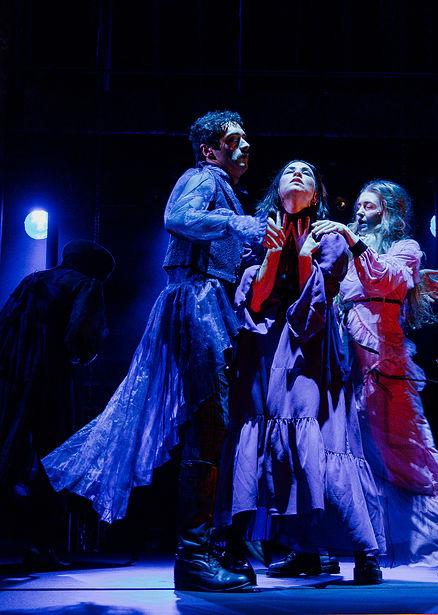
IMPORTANT NOTE:
When you are writing about Set or Costume, you need to be specific about the following details and also sketch what you see. Imagine the person you are writing for has not seen the production and create a vivid image in their mind of what you saw:
• For example: Set/Props
• The size, shape and dimensions of any set pieces or props used
• The materials used, their textures and the colours
Exploring the characters of MARY: The Birth of Frankenstein
When you are thinking about an actor’s performance to write about in an exam or report setting you will want to build a comprehensive profile of how they used their body, voice, movement and use of space. Details about motivation, ideas or symbols they highlighted and moments of subtext that pointed to themes or relationship dynamics. You will want to link these details to specific moments in the performance, describing what was happening on stage and linking to big ideas and wider context.
These activities will enable you to build a kētē of information about characters you found compelling or who were integral to the narrative:
Each character within MARY: The Birth of Frankenstein has their own narrative arc, relationships and tensions. It is important to understand why the character is behaving the way they are, what has happened for them prior to the play beginning that makes them who they are and what they are communicating to the audience.
PRE-READING
• In small groups read Meet the Characters and Meet the Actors:
• Highlight ideas that interest you
• Circle quotes you think would enrich an answer in an exam
• Underline and annotate ideas that link to a specific moment in the performance.
• If you recorded the post show forum, find excerpts where the actors answered questions:
• Write down ideas that interest you
• Record quotes you think would enrich an answer in your exam
• Record moments in the forum that surprised you or provided more context for something you saw on stage.
IN THE CLASSROOM
EXPLORING MOTIVATION AND POWER THROUGH CHARACTER:
“Byron’s challenge to his fellow writers to compete with each other in writing a gothic-horror story was very real.“ Using the information from ’Meet the Characters’ section of this pack, including the photographs complete the following activity:
• Draw a character tree (think a family tree) - you could pull the images directly from the pack to create a physical or digital version. Yours or your group’s version of the character tree should make sense to you and can look different from your peers.
• Annotate their ties and relationship to Mary, what they are influenced by and how they in turn influence the creation of Mary’s Frankenstein.
• Outline the key relationships and hierarchy within the group
• Annotate what the characters think of each other, include how the characters contrast, the tensions of the relationships
• Annotate how the characters are impacted by the weather or atmosphere of the play
• Add key quotes for each character
• Come up with a key sentence which captures each character’s purpose in the story being told.
Reflection question:
As you constructed the character tree, did you find out new information or come up with interesting new ideas to explore? Discuss this as a class with your teacher.
EXPLORING
CHARACTER THROUGH MOVEMENT - divide into six groups, with each group assigned one of the six characters of the production. Create a techniques profile for the character based on the following:
• How did they use their body techniques to express their character?
• How did they use their voice techniques to express their character?
• How did they move through the space and how did they support their characterisation?
• How was their characterisation influenced by movement coach Ross McCormack?
PHYSICALISE - using the notes you have compiled in your techniques profile recreate the climactic moment of the play for your character. Explore the characters’ thoughts and ideas in this moment. You will:
• You will all play the same character
• Use slow motion movement, specific posture, flocking AND/OR chorus of movement
• Spoken thought to reflect all the thoughts and feelings of the character
• Make the scene creative and fun
Reflect: How does bringing a character to life in the classroom and exploring their physicality and motivations through performance help deepen your understanding of MARY: The Birth of Frankenstein?
REVISE
DRAMA TECHNIQUES: BODY, VOICE, MOVEMENT AND SPACE:
• Describe how an actor who you found interesting or compelling used drama techniques in a specific moment in the performance.
• Describe how two actors used proximity during a moment of tension.
• Discuss how an actor uses drama techniques during a solo moment on stage. What were they aiming to communicate? What did you understand at that moment?
• Explain another actor’s use of drama techniques and how they created a sense of authenticity within the performance.
• Choose specific moments where you felt the actor used their body, voice, movement, and space in combination to create impact, focus, or to support an important idea.
• Discuss why you think authenticity is important in a contemporary performance
• Thinking about the actors and the way they created their characters:
• How did they use techniques to create a sense of time and place?
• How did they use techniques to communicate their history?
• How did an actor use drama techniques to communicate subtext in their performance? Use a specific moment and example to discuss this use of subtext.
• Discuss what you found compelling about an actor’s use of drama techniques in the performance. Choose a specific moment to focus on.
CHARACTER:
• Discuss what the character communicated to the audience; how did the actor portray them? Plot their character arc and describe how he uses techniques to communicate this.
• Discuss the purpose of the characters:
• What impact do they have on the narrative, as well as the audience and actors’ relationship?
• How does the actor’s use of techniques communicate their purpose in the performance?
• Explore the ensemble of characters as a whole: what purpose do they serve in the narrative?
Afterword
By Emily Hurley,
Auckland Theatre Company Teaching Artist
After Mary finished the draft of her novel, her husband Percy took on the responsibility of editing and shepherding it towards publication. Percy bemoaned the fact that Mary had made Frankenstein’s creature so gruesome - a mess of amalgamated body parts, he instead suggested that the creature should appear beautiful like a “Fallen Angel“. This change Mary denied, she saw the creature’s ugliness as essential to his humanity and believed that his body should be a mess because “our lives are a mess“. Mary saw the monster as completely human, though monstrous in appearance and ultimately driven to violence due to the unmet need for love as he was abandoned by his creator from the moment he came to life.
After Frankenstein, Mary seldom found comfort in her partner whilst she bore a slew of tragedies that included the death of her second child. Percy remained committed
to his ideals of free love and had relationships with other women despite Mary’s desire for stability and a loving family environment - something she had been denied all her life. In this mess, Mary often turned to her journals as an outlet. In one instance she writes:
“Let me in my fellow creatures love that which is and not fix my affections on a fair form endued with imaginary attributes… above all let me fearlessly descend in the cavern of my own mind - carry the torch of self knowledge into its dimmest recesses“
Sayer’s re-telling of Mary’s story captures the essence of this innerknowing; that to be an artist and indeed to truly be a whole human being we must not deny in ourselves the darkest parts of our nature but instead bravely venture to embrace our shadows and twisted stories.
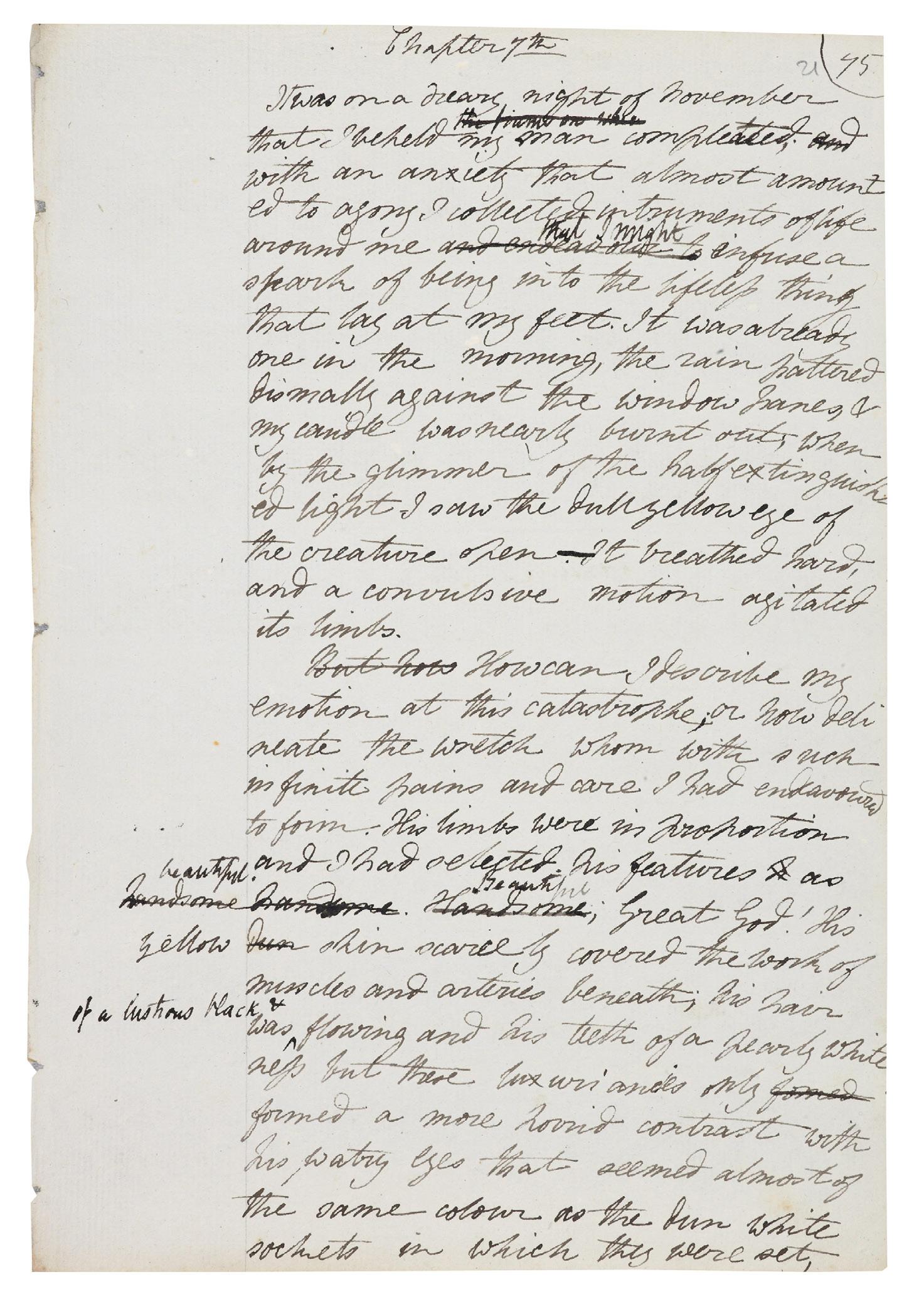
Page from Mary Shelley’s manuscript of Frankenstein, with annotations by Percy Bysshe Shelley.
I am 185 years old. I was born on 6 February 1840. 185 taku pakeke.
6 o Pēpuere 1840 taku rā whānau.
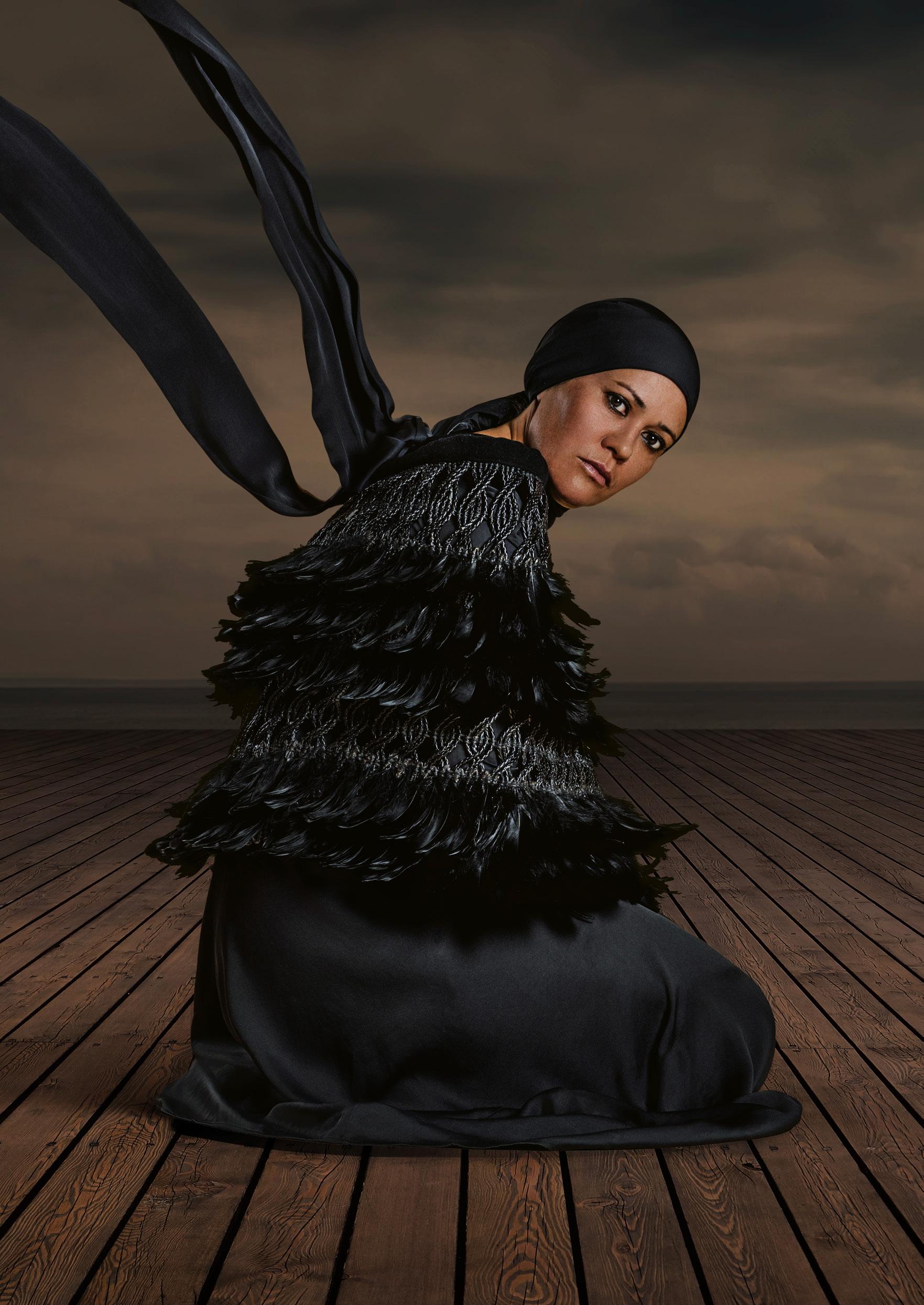
4 – 23 NOV |
